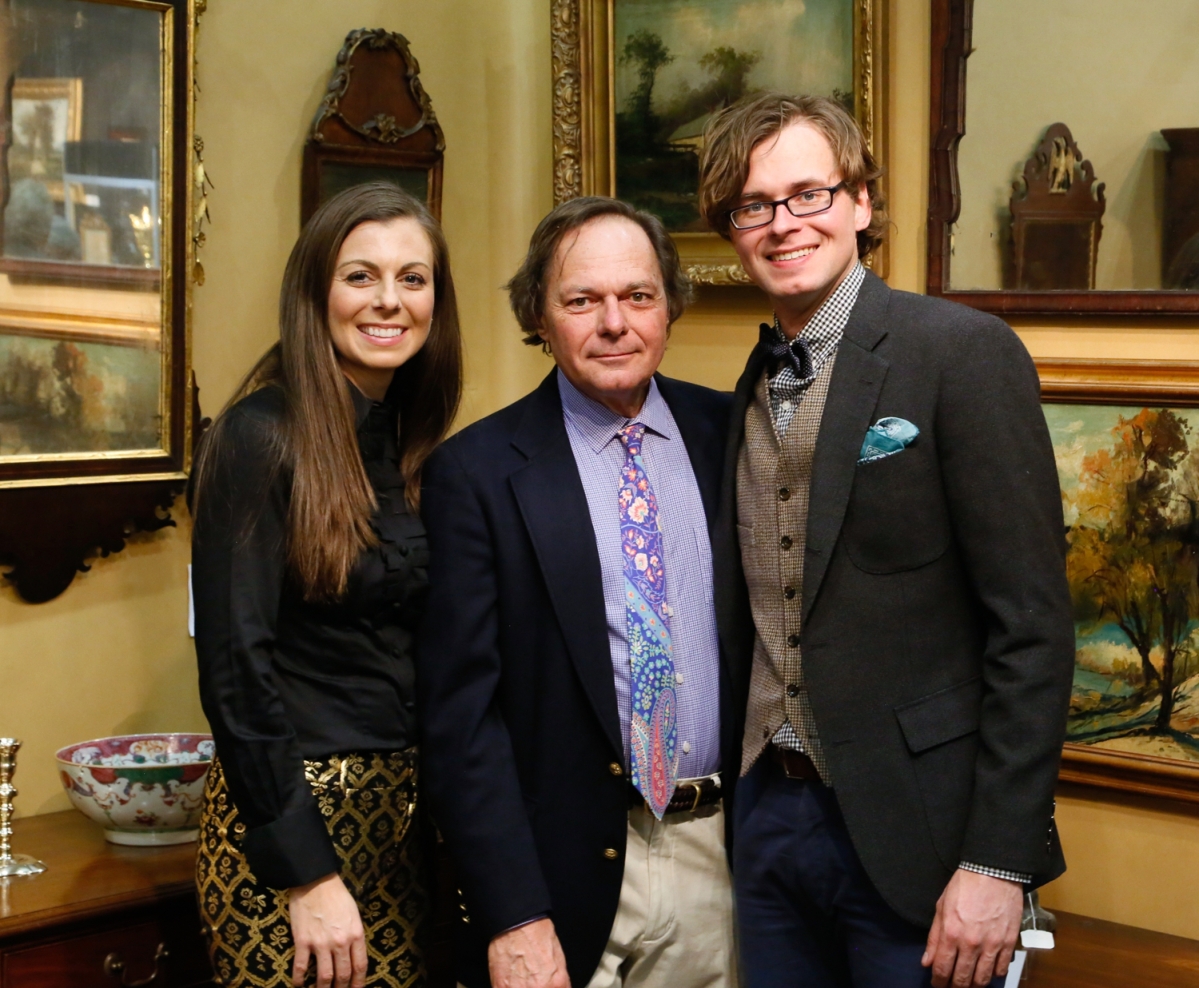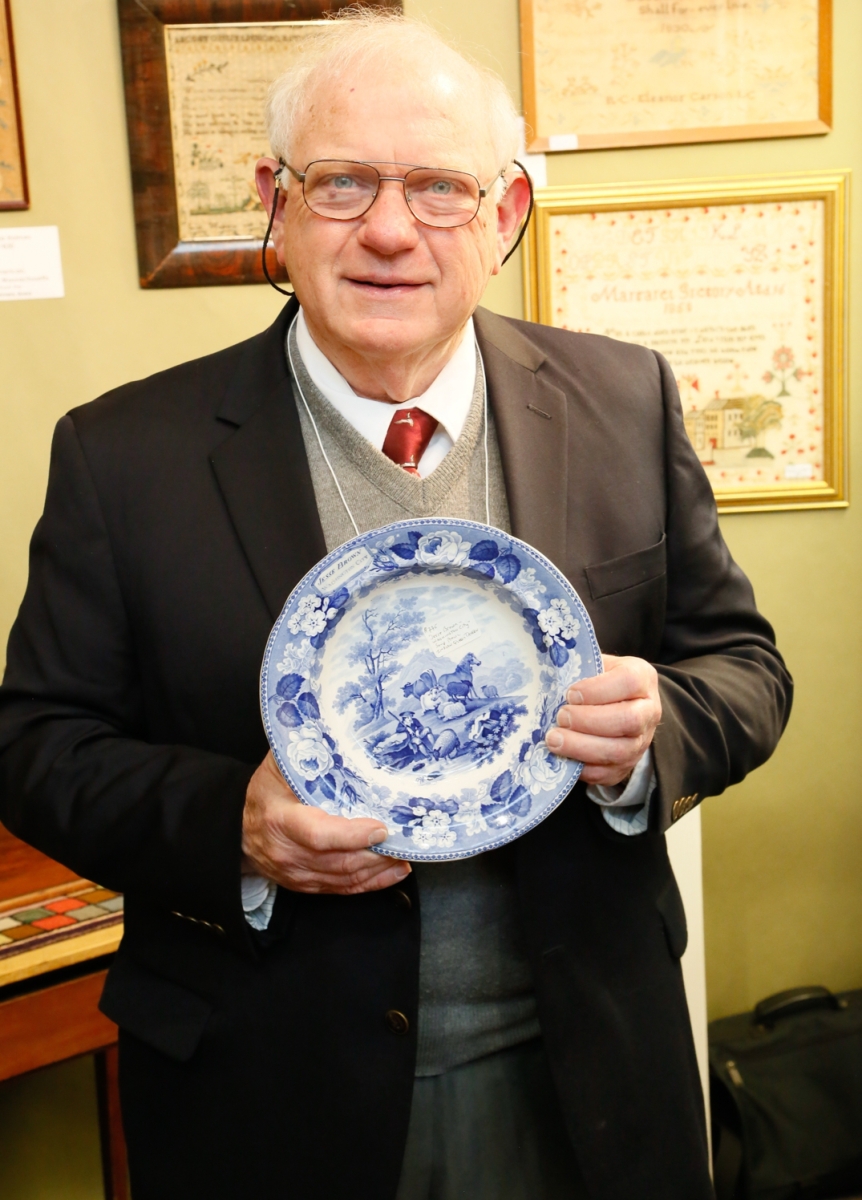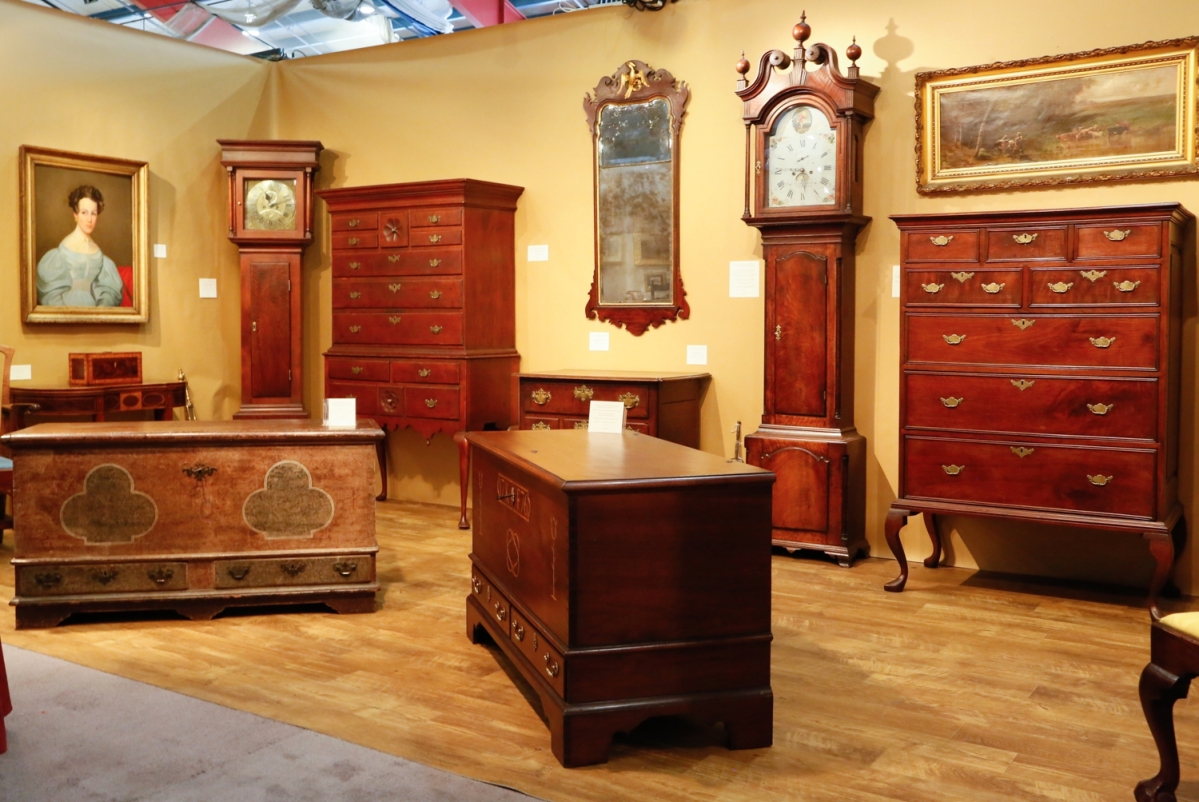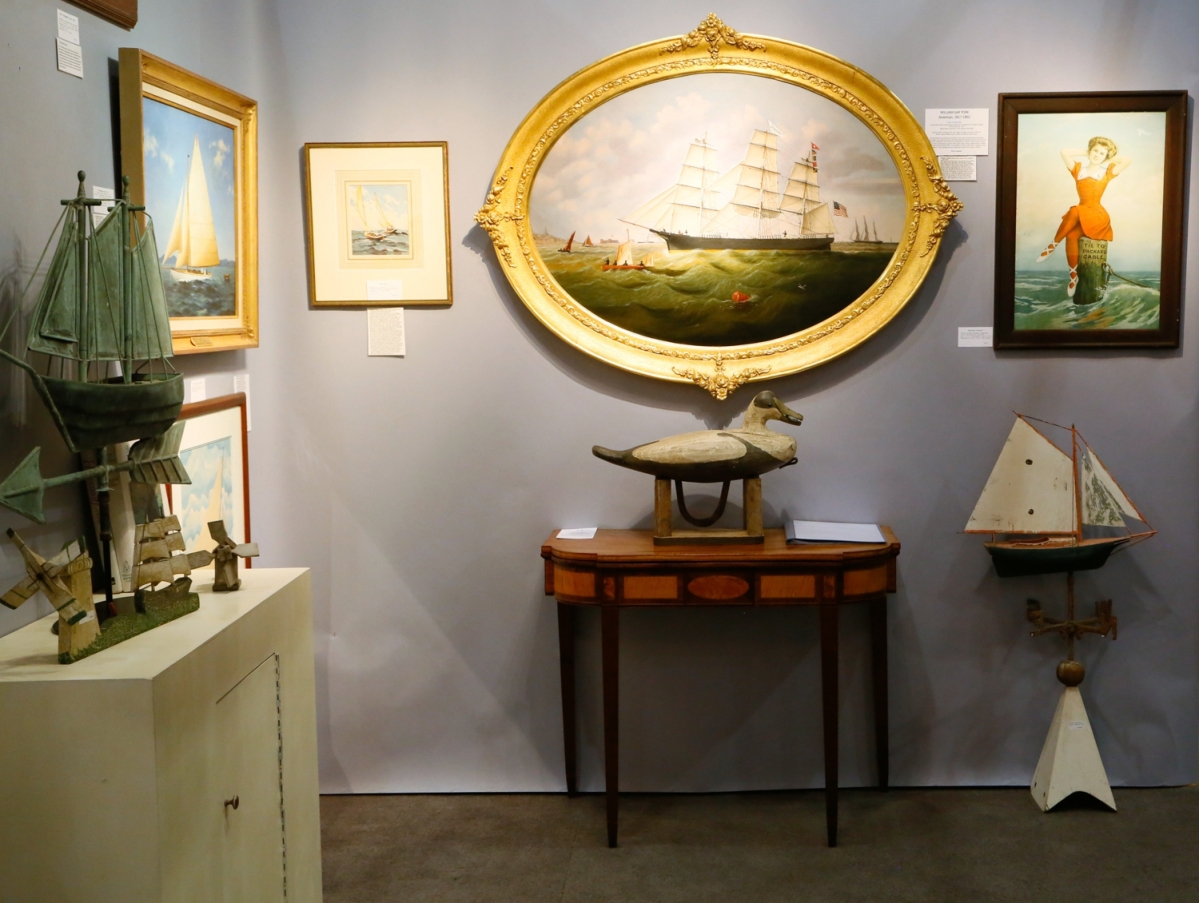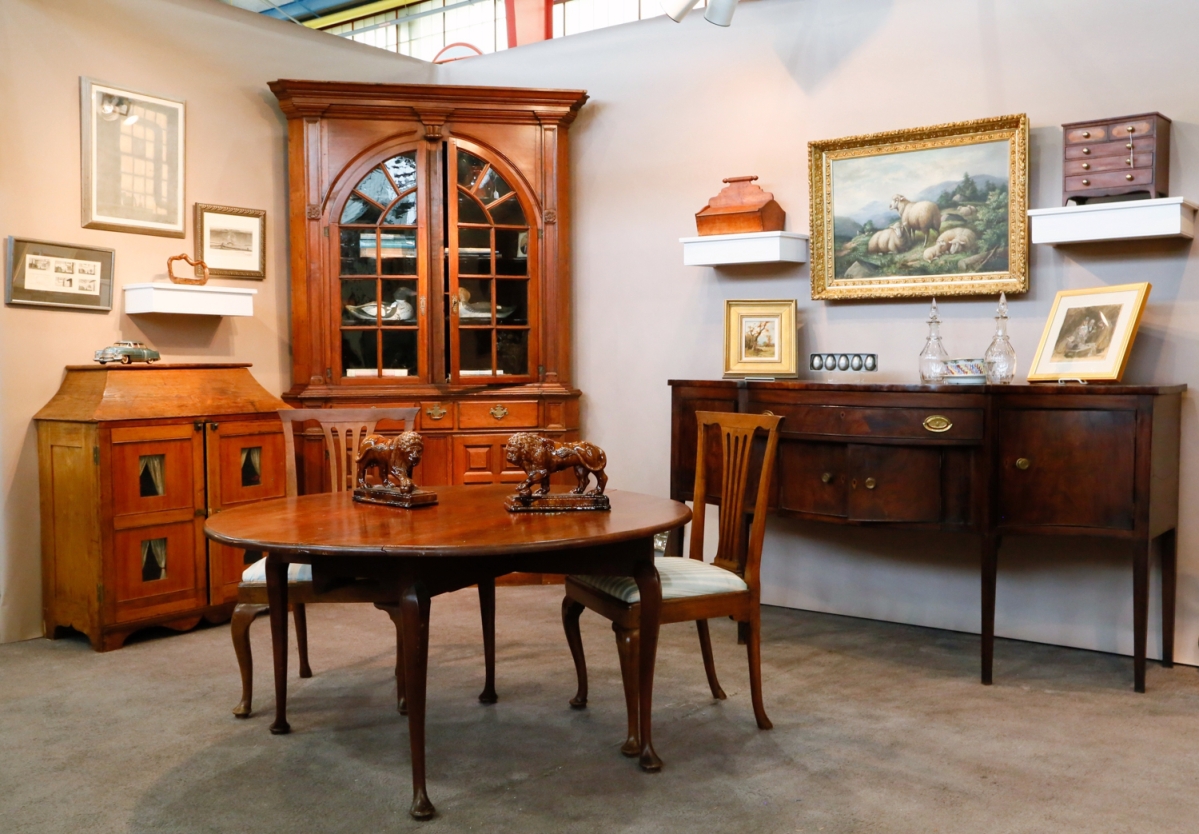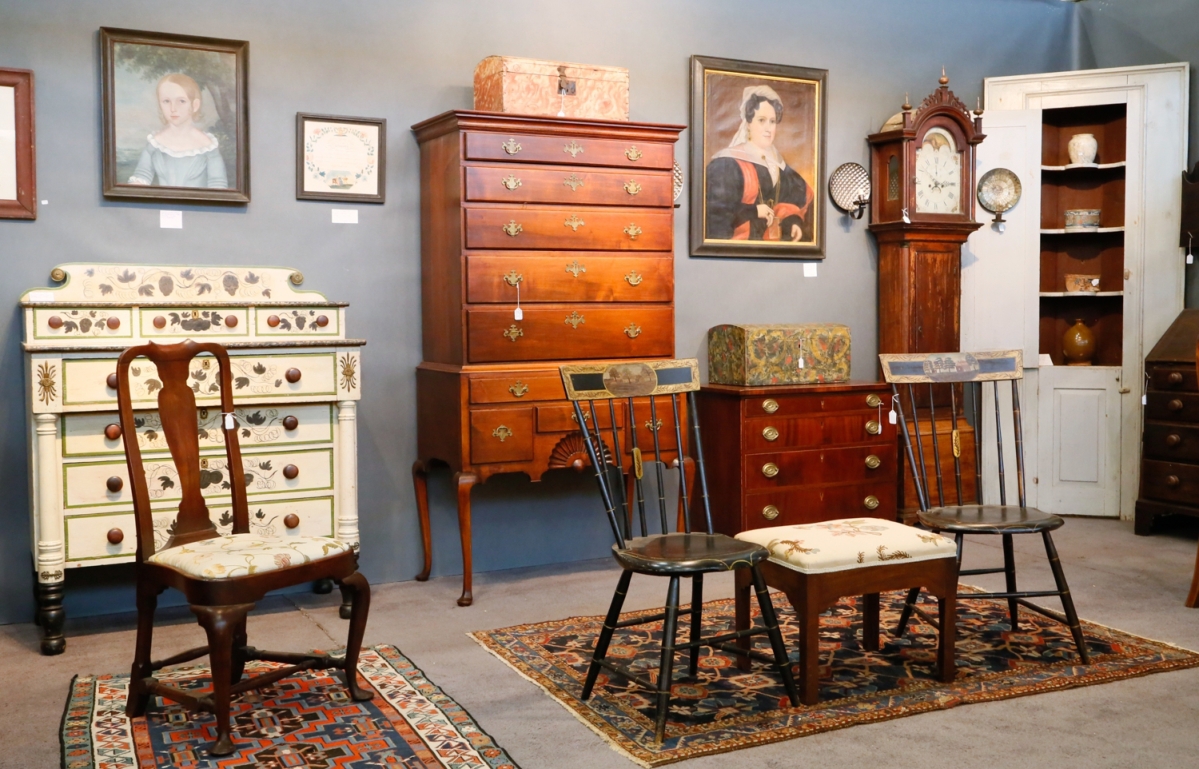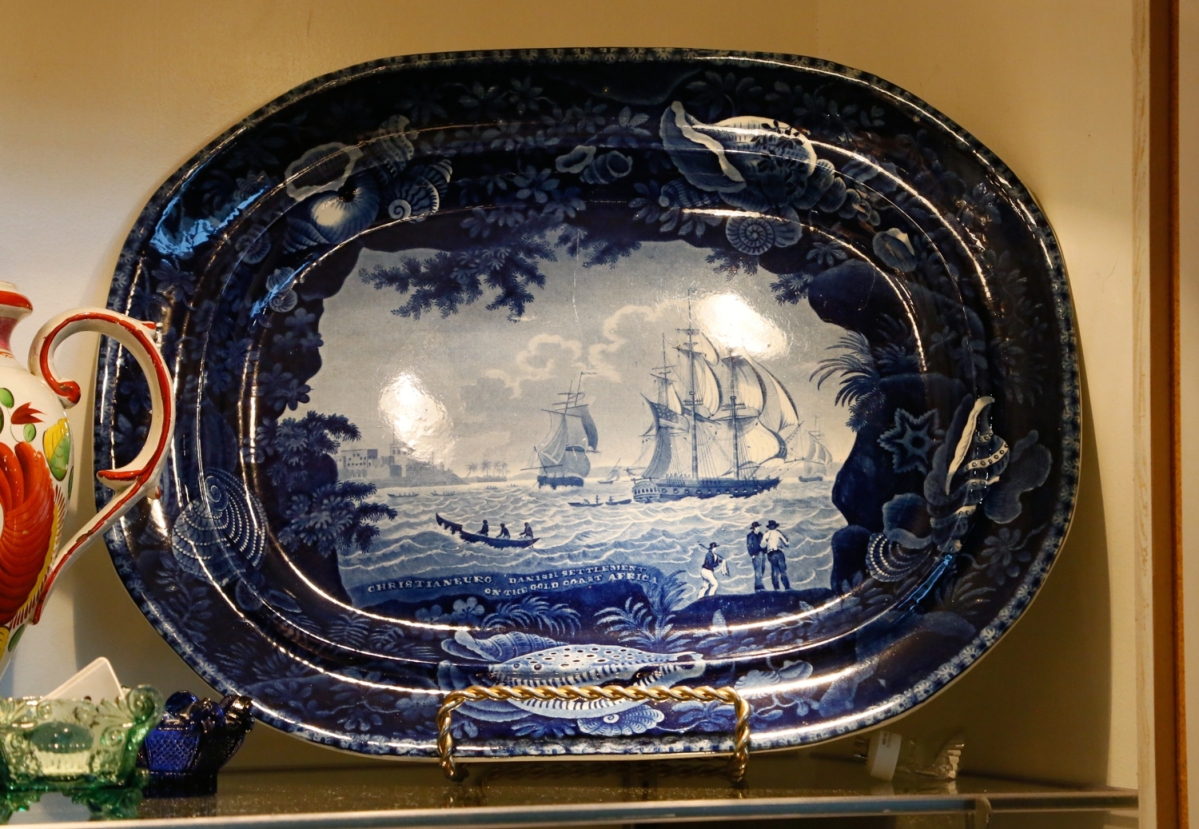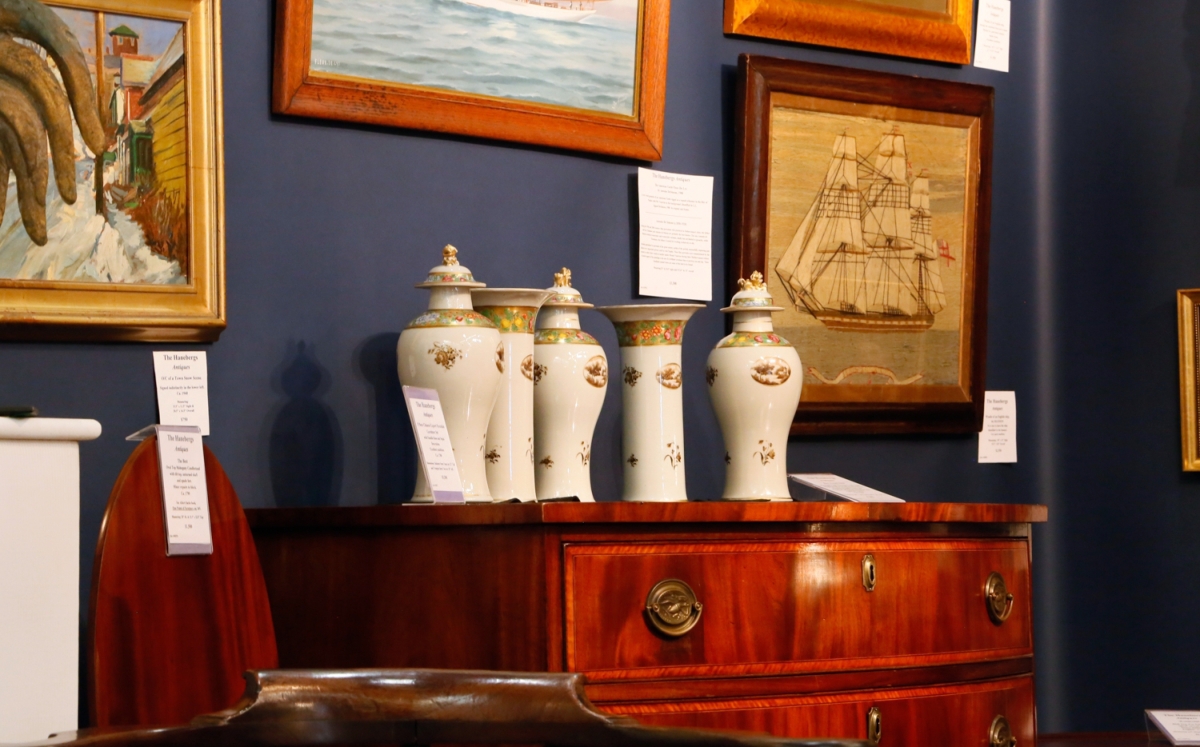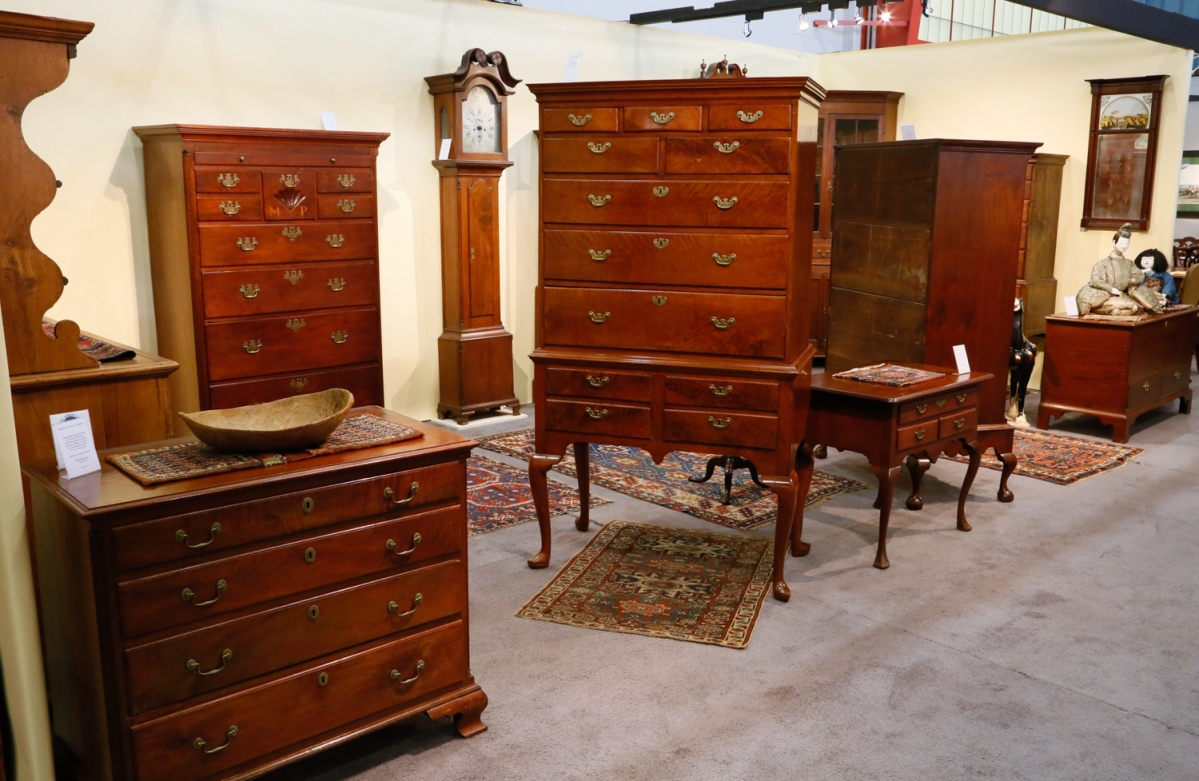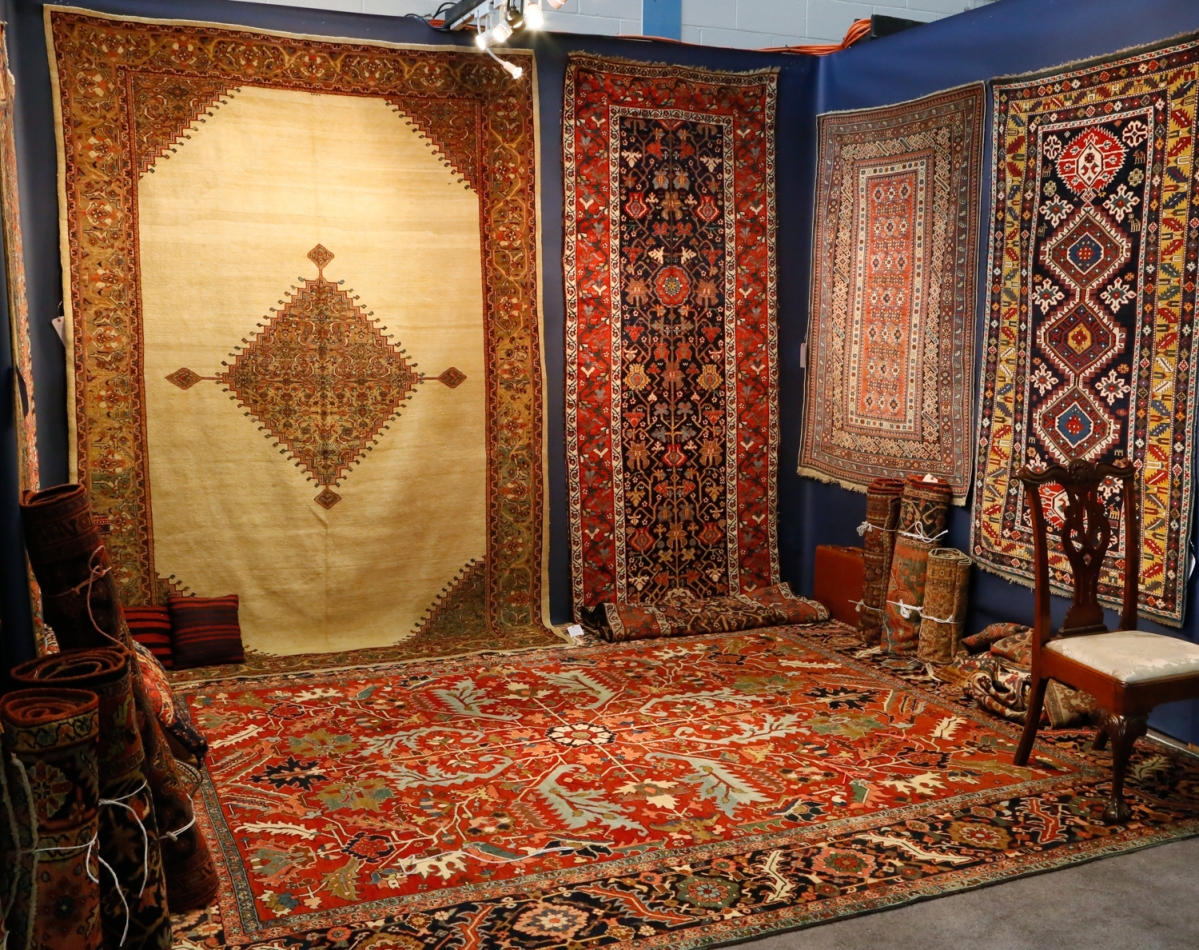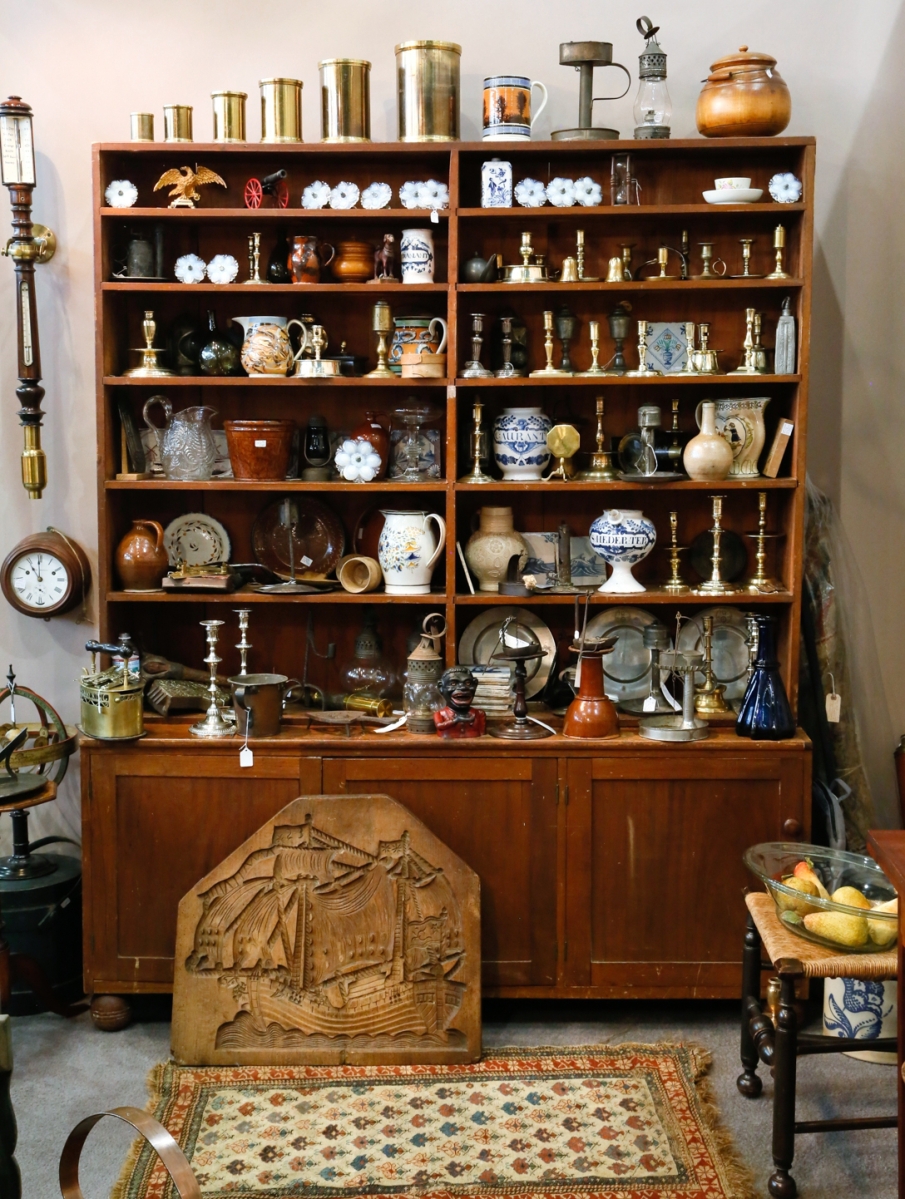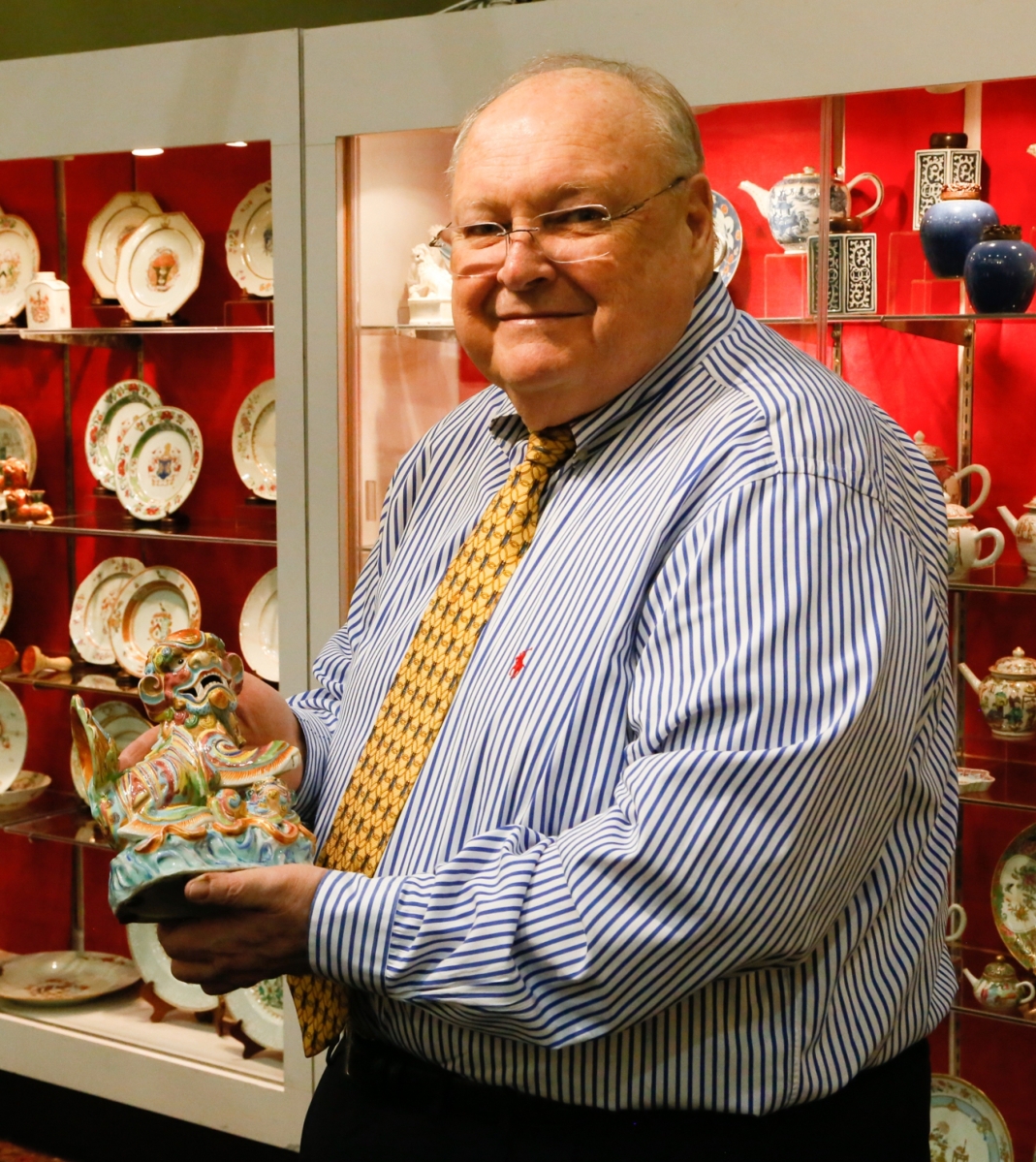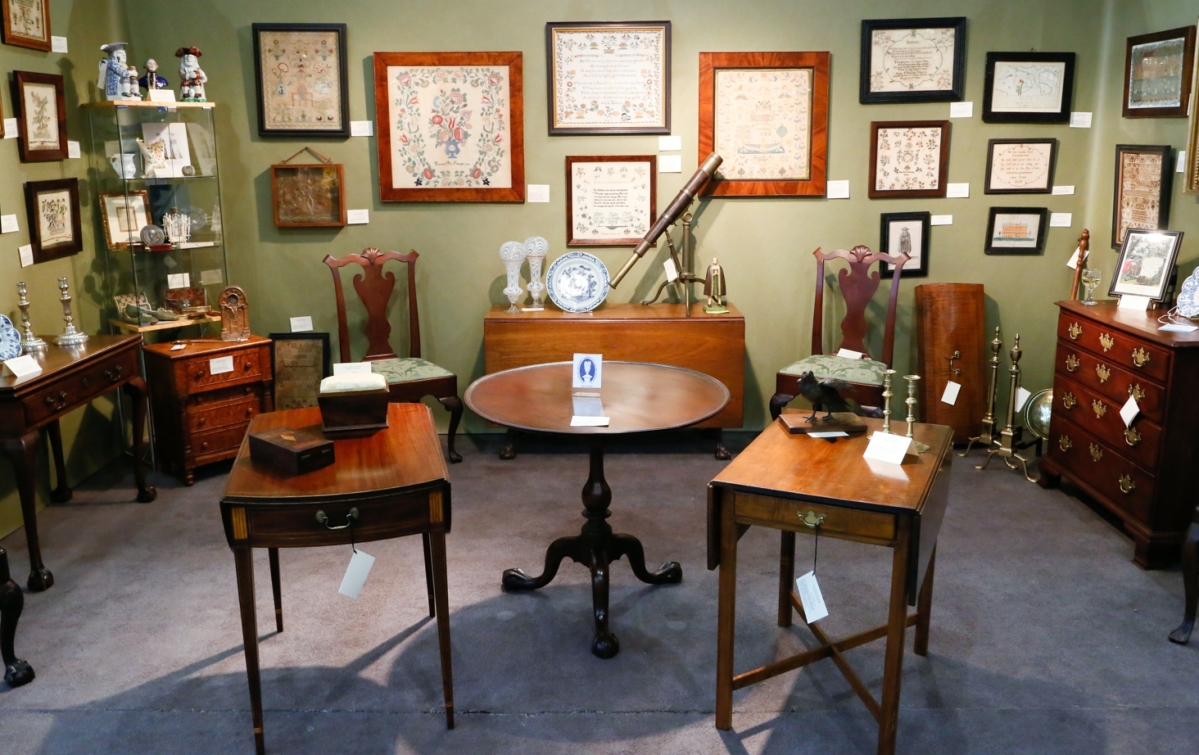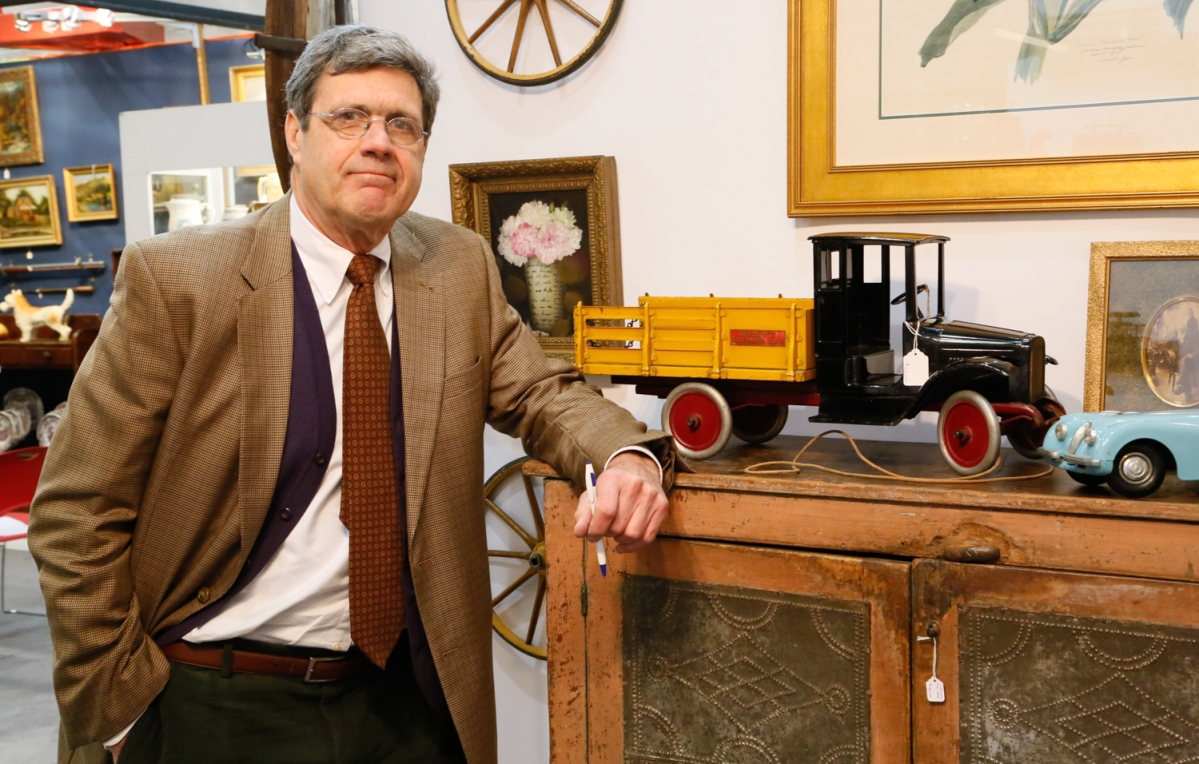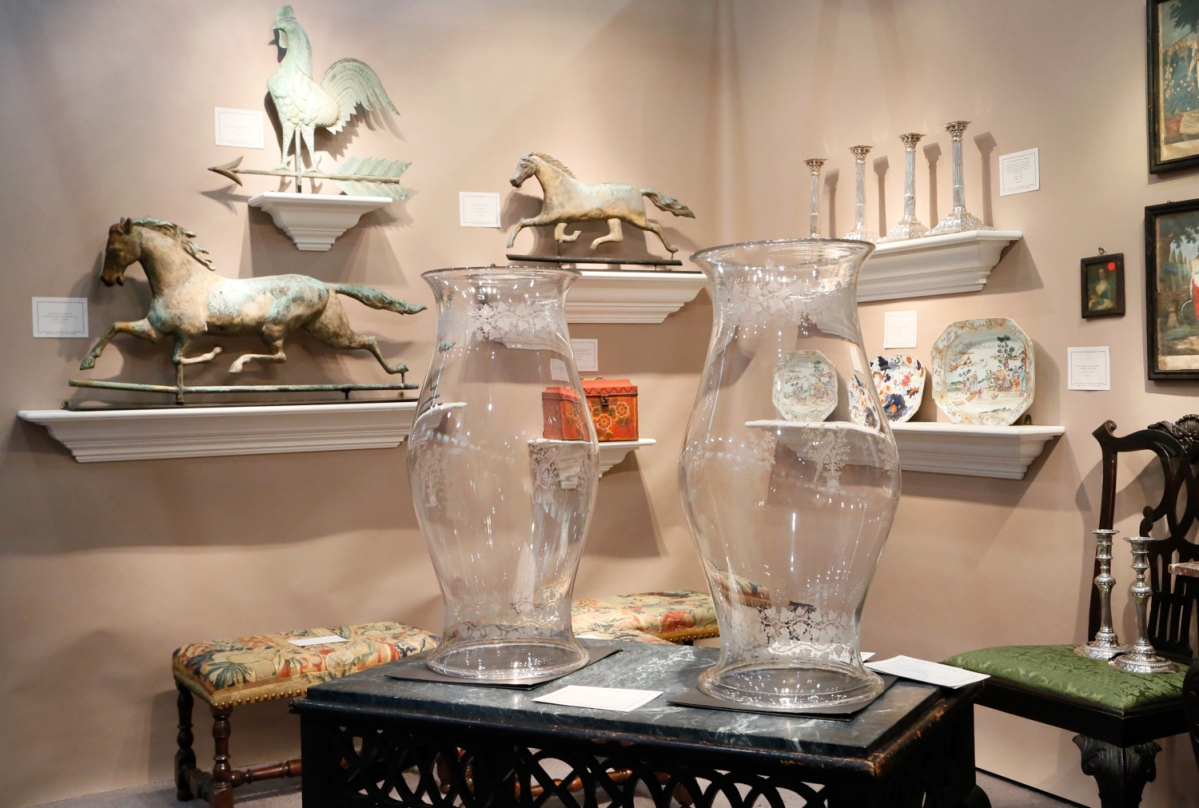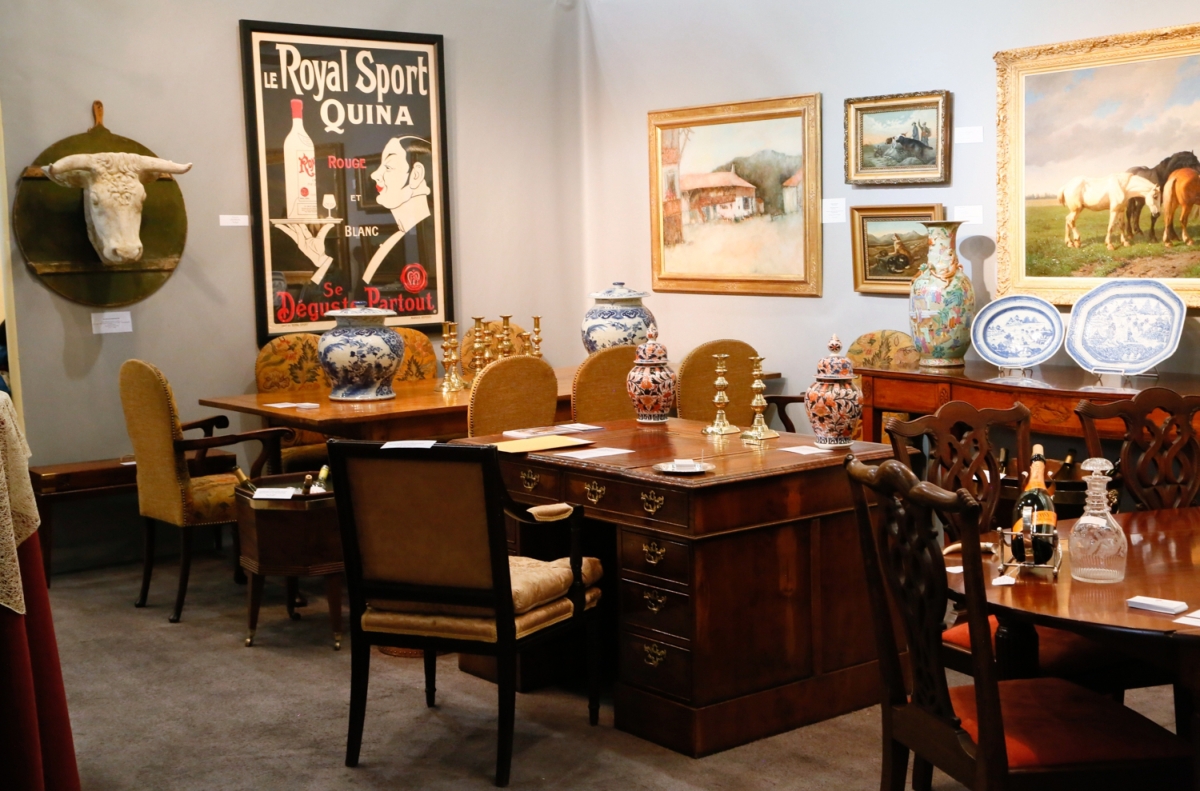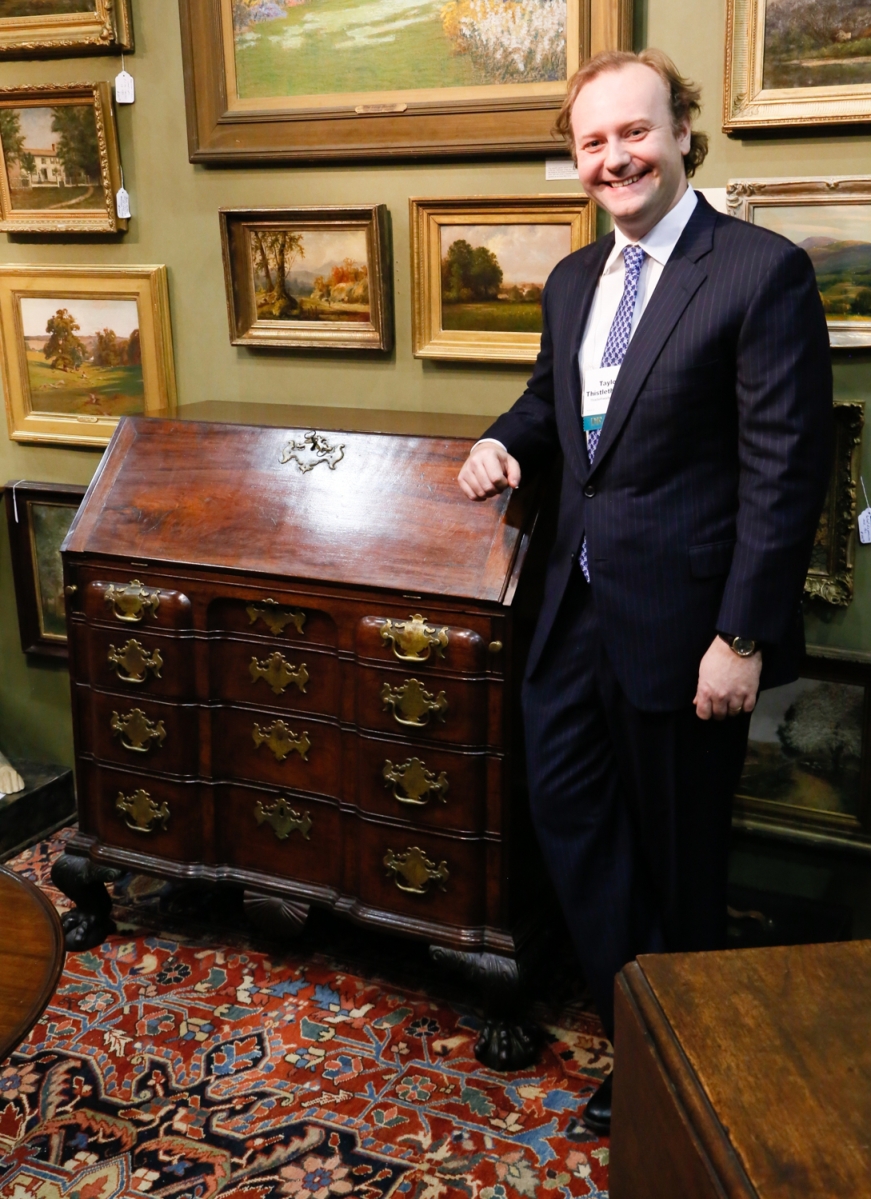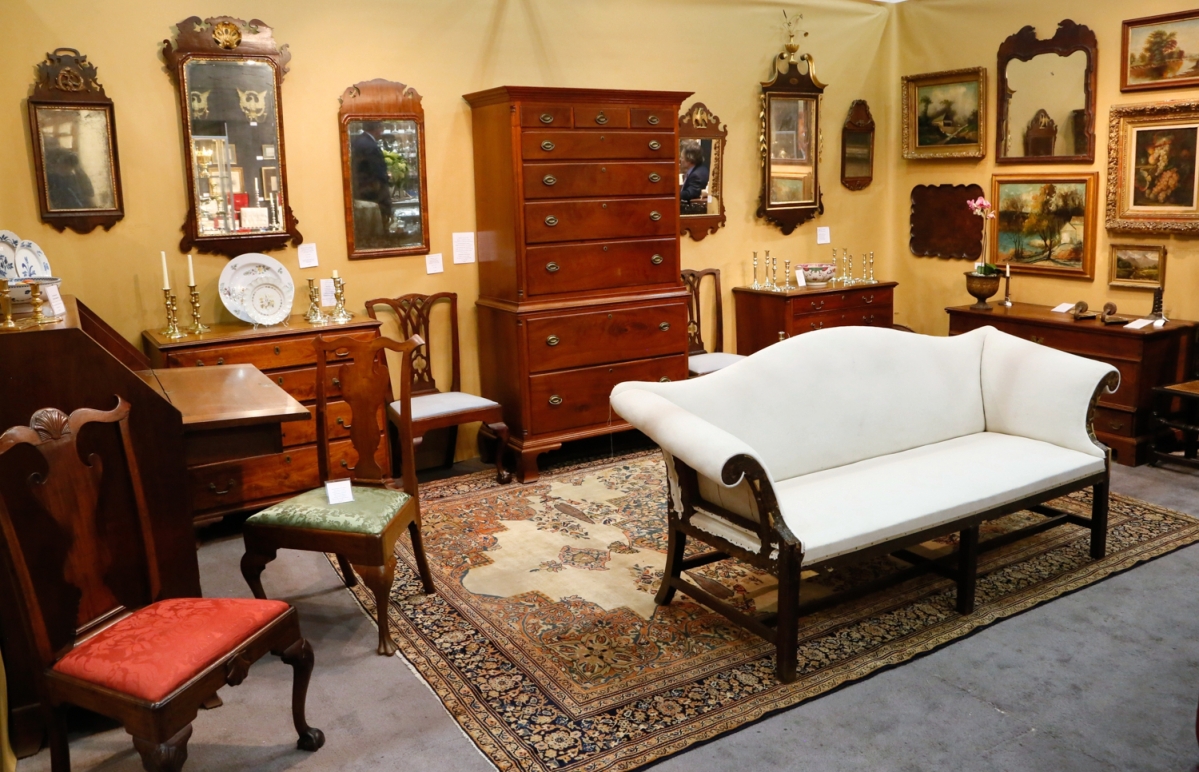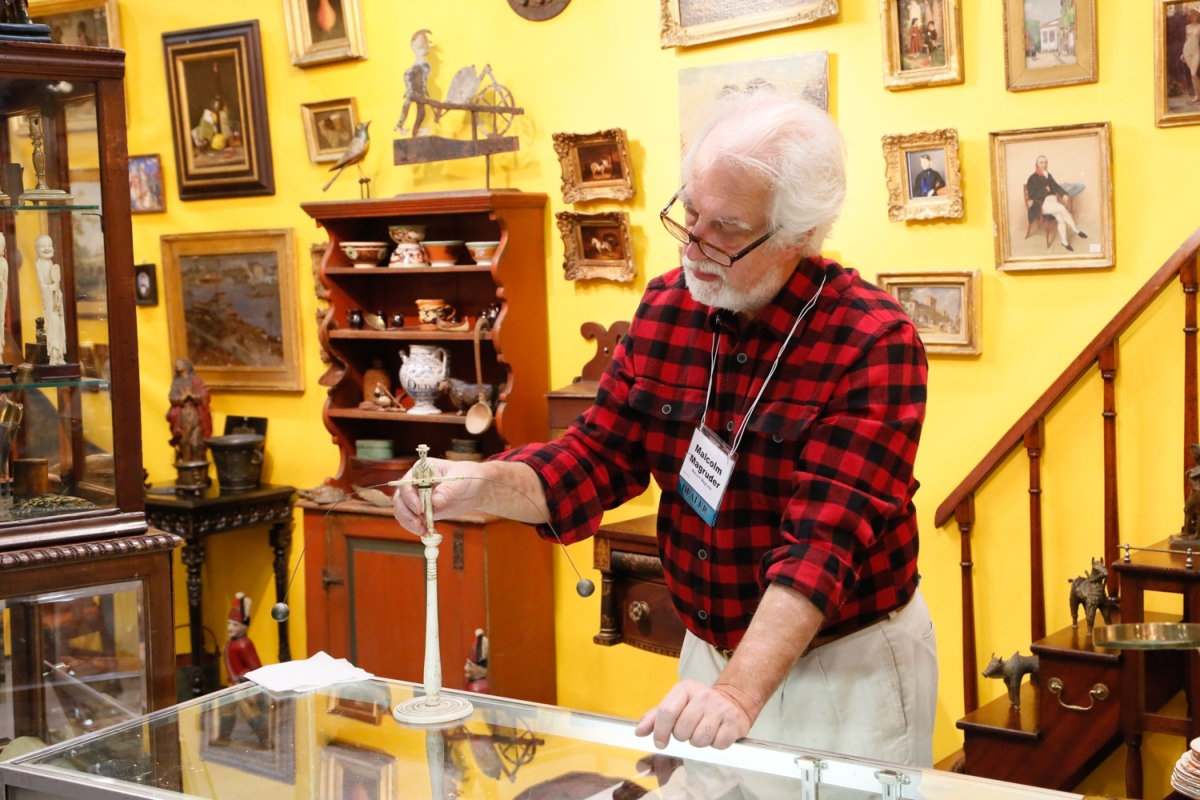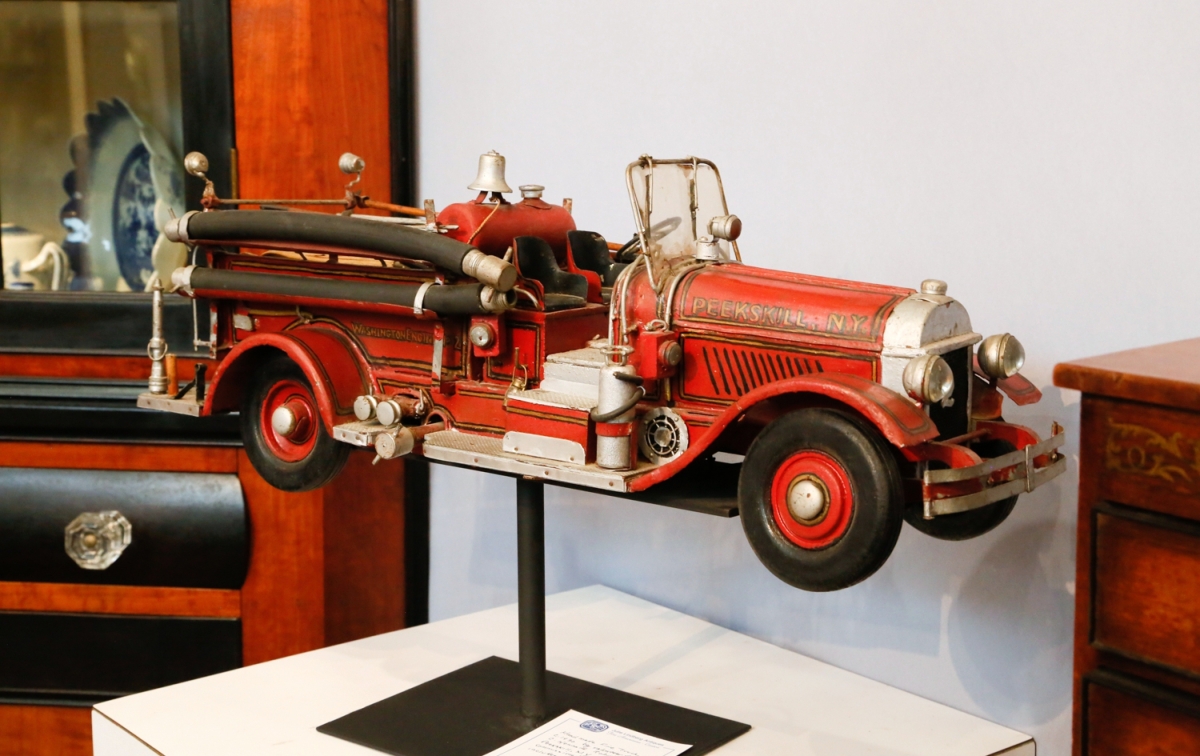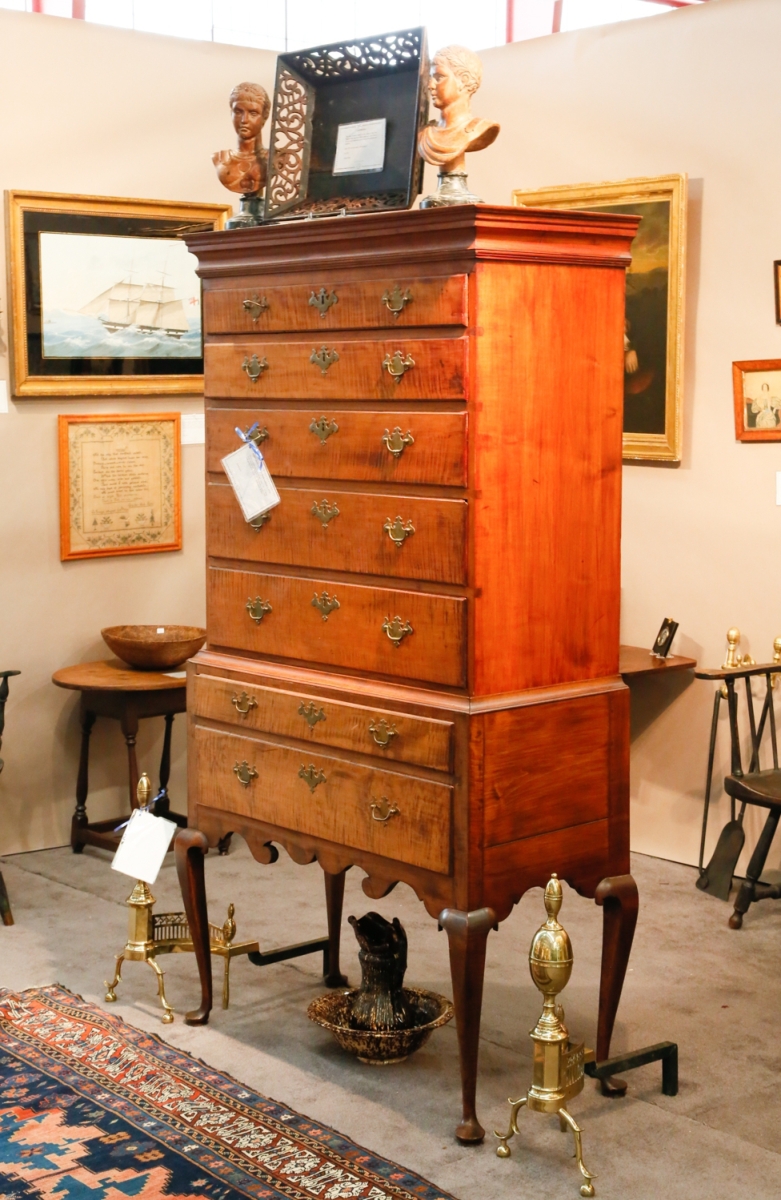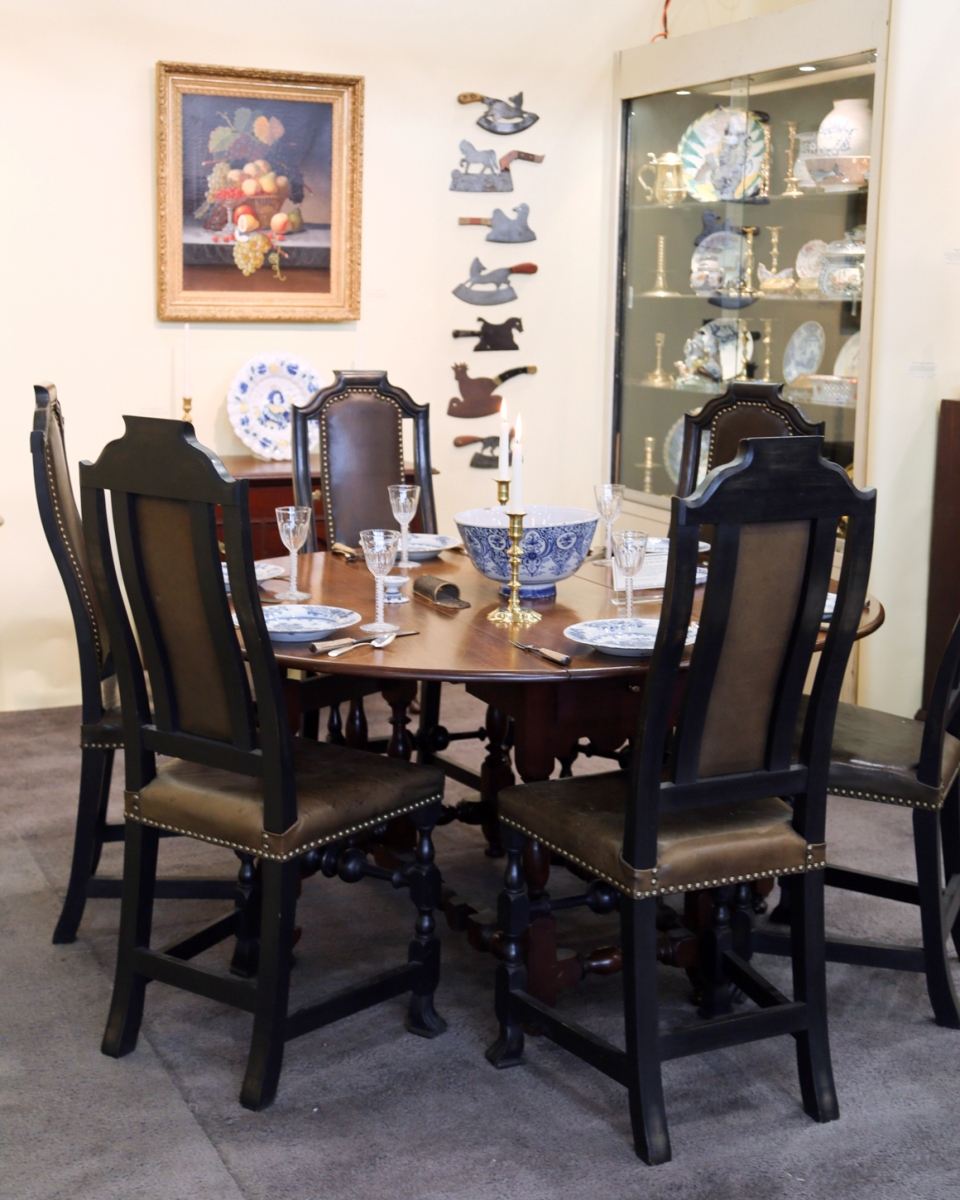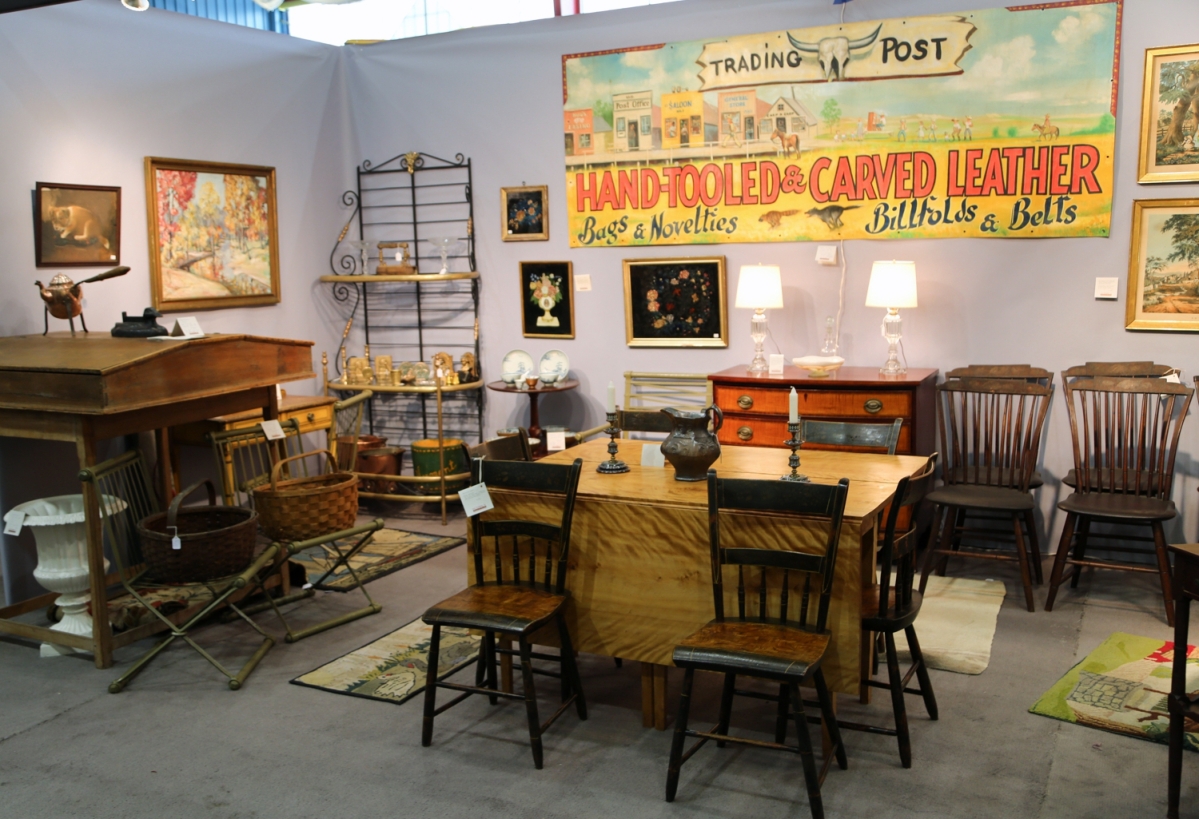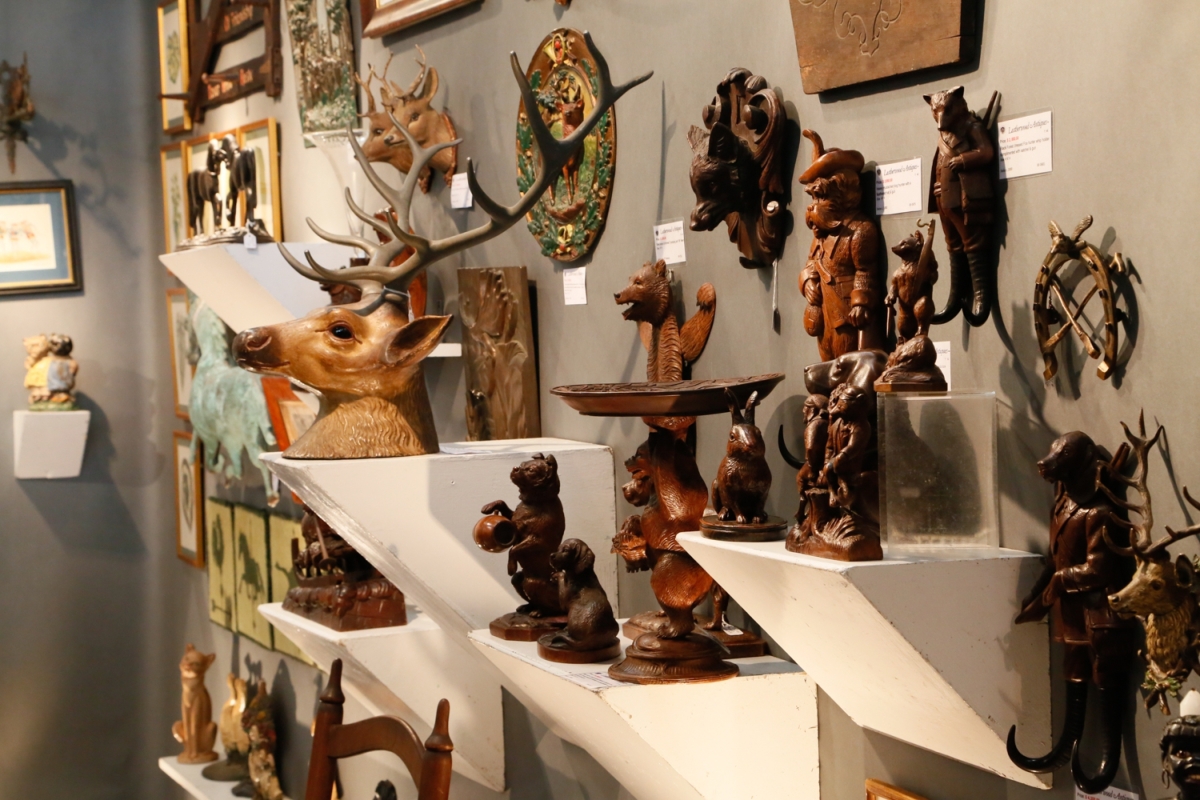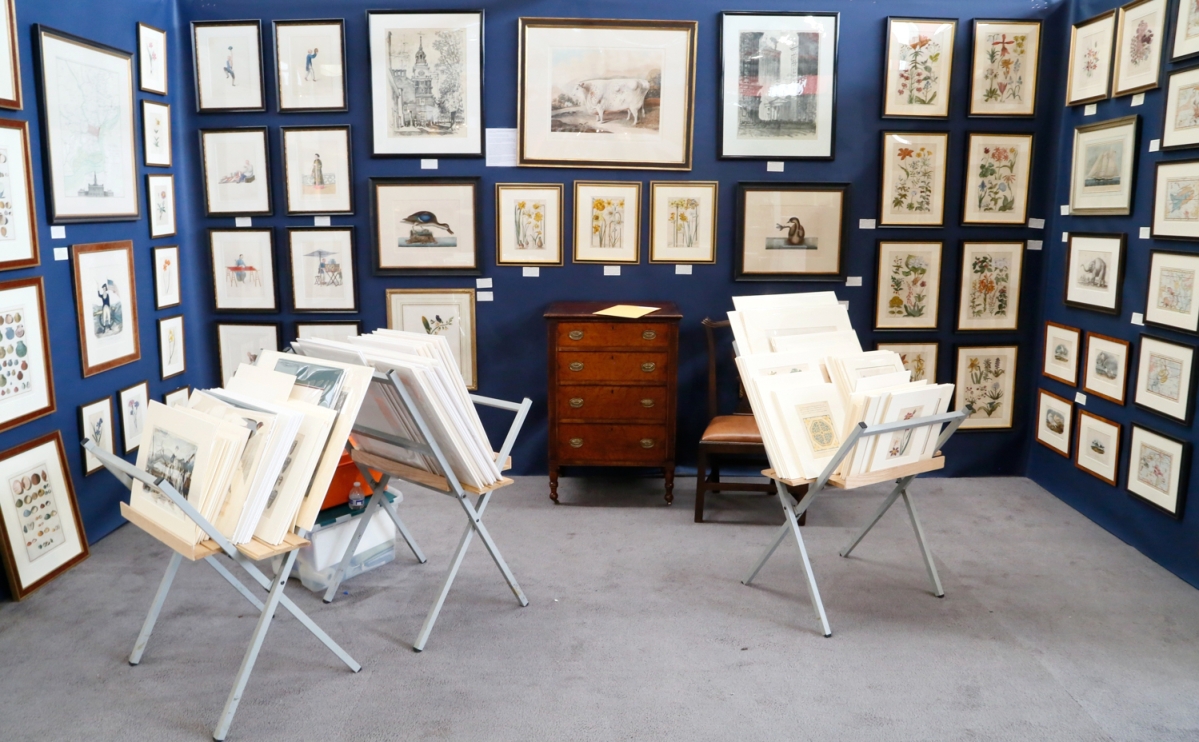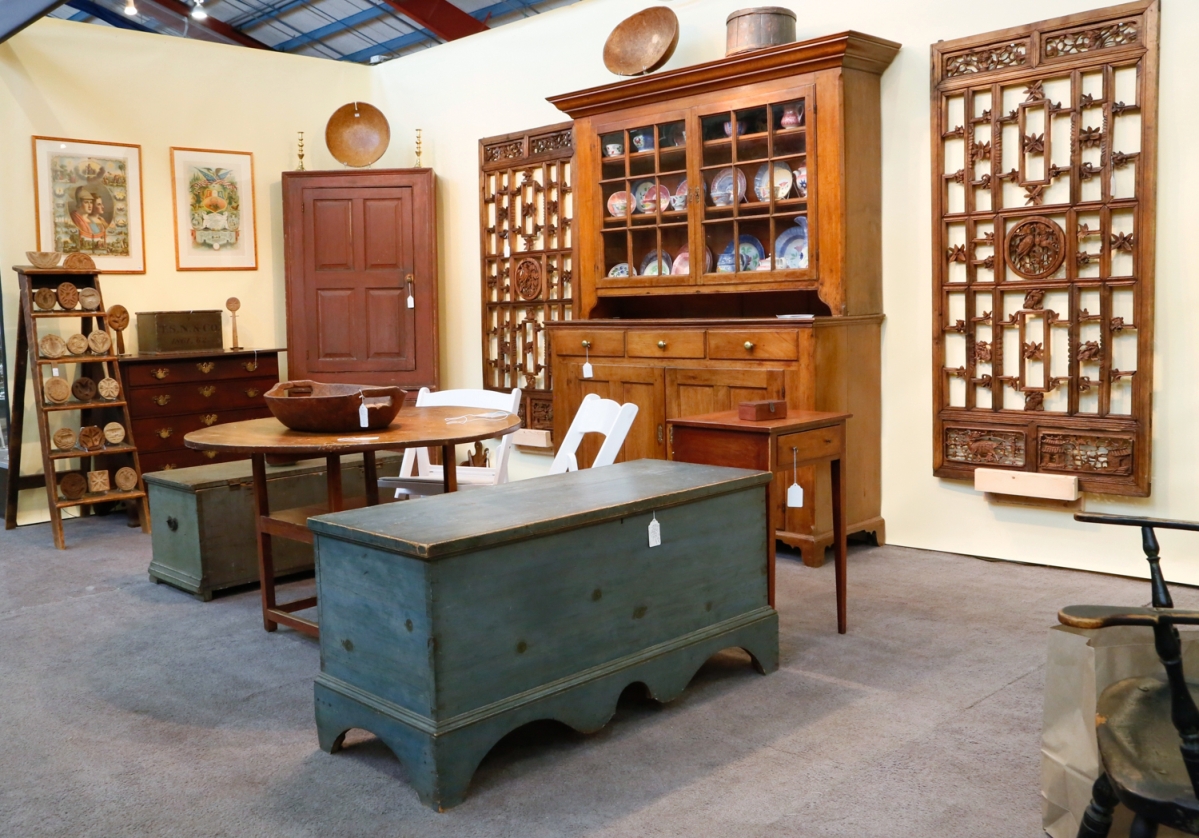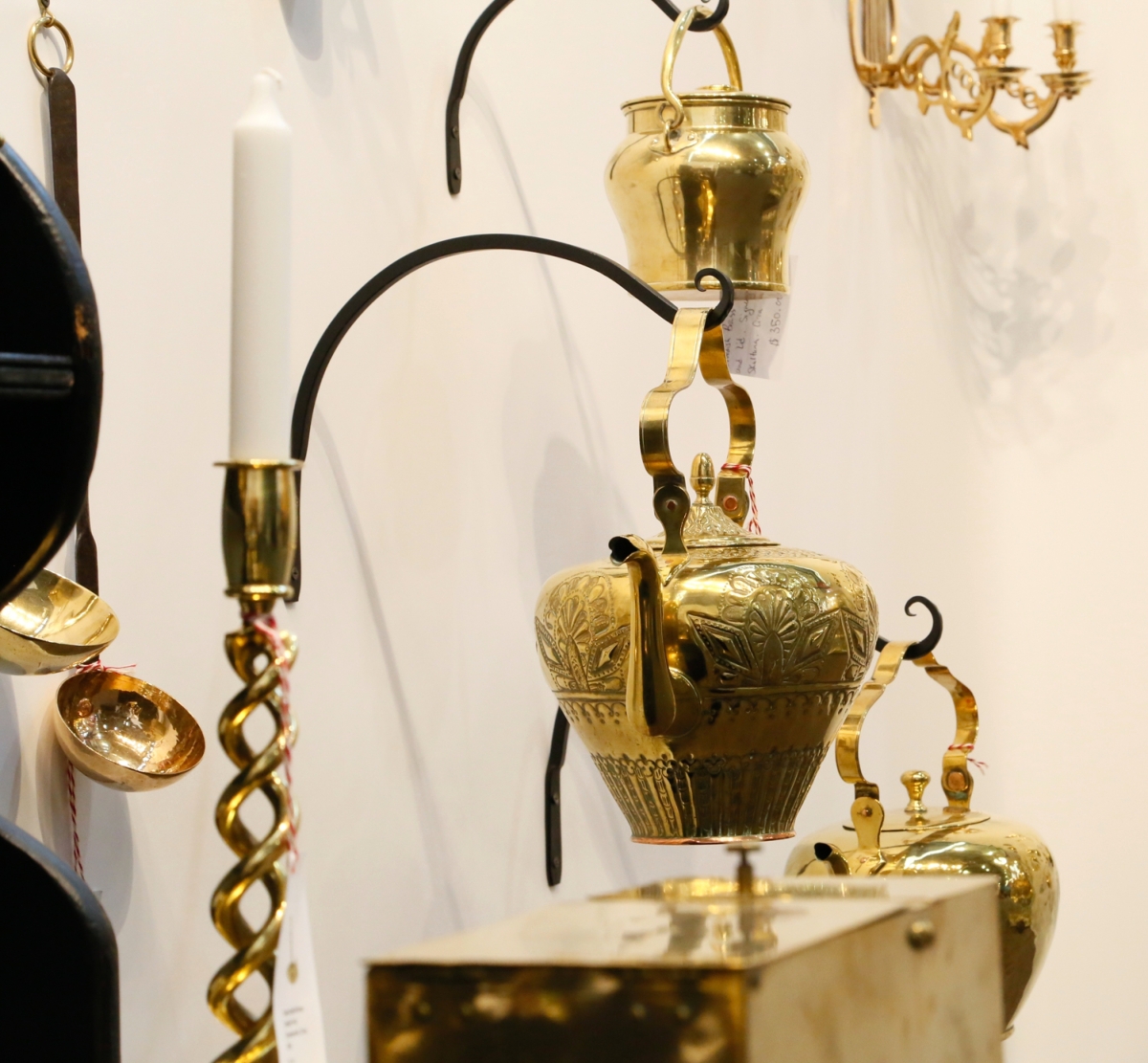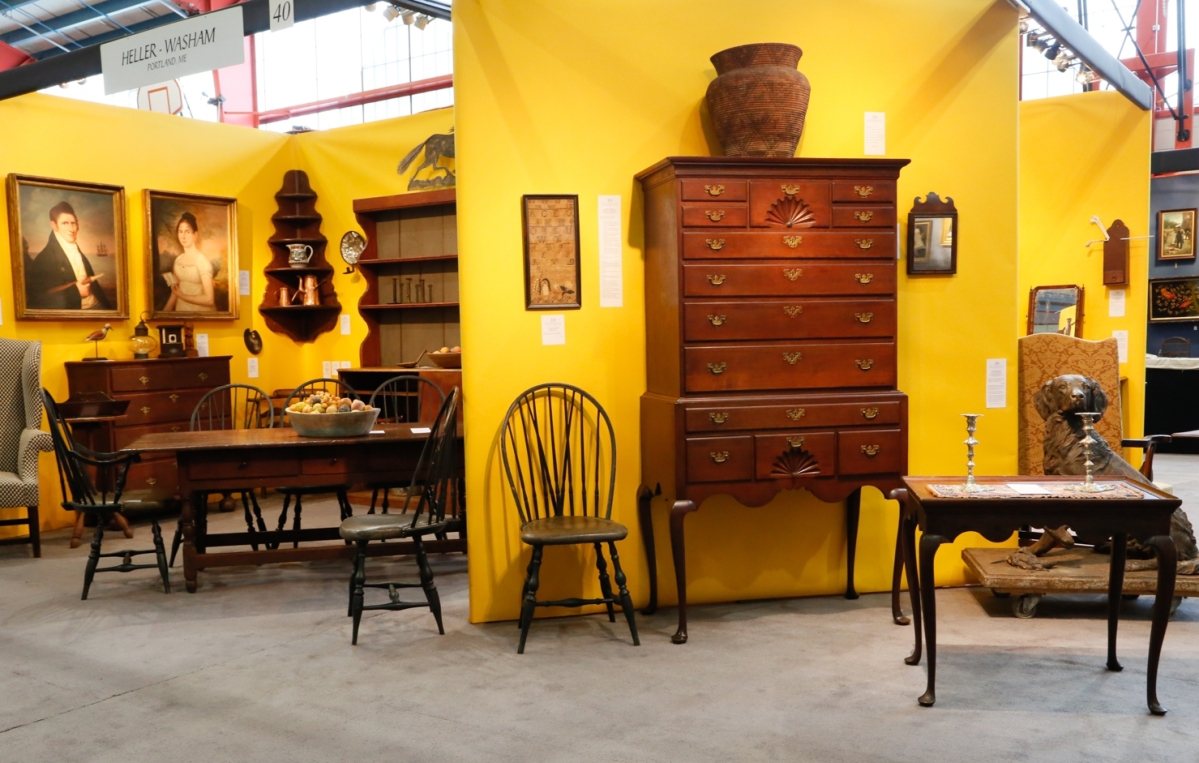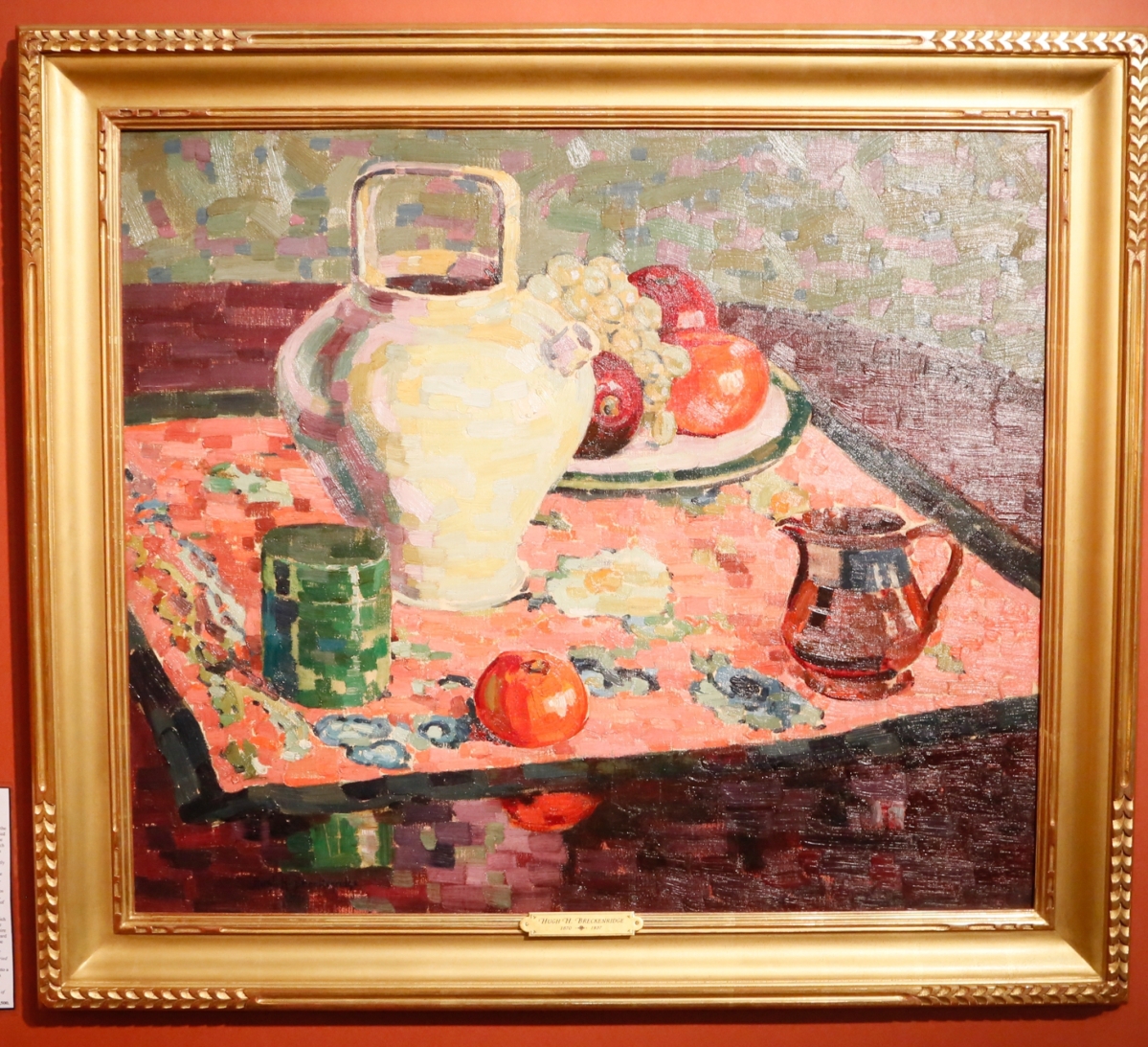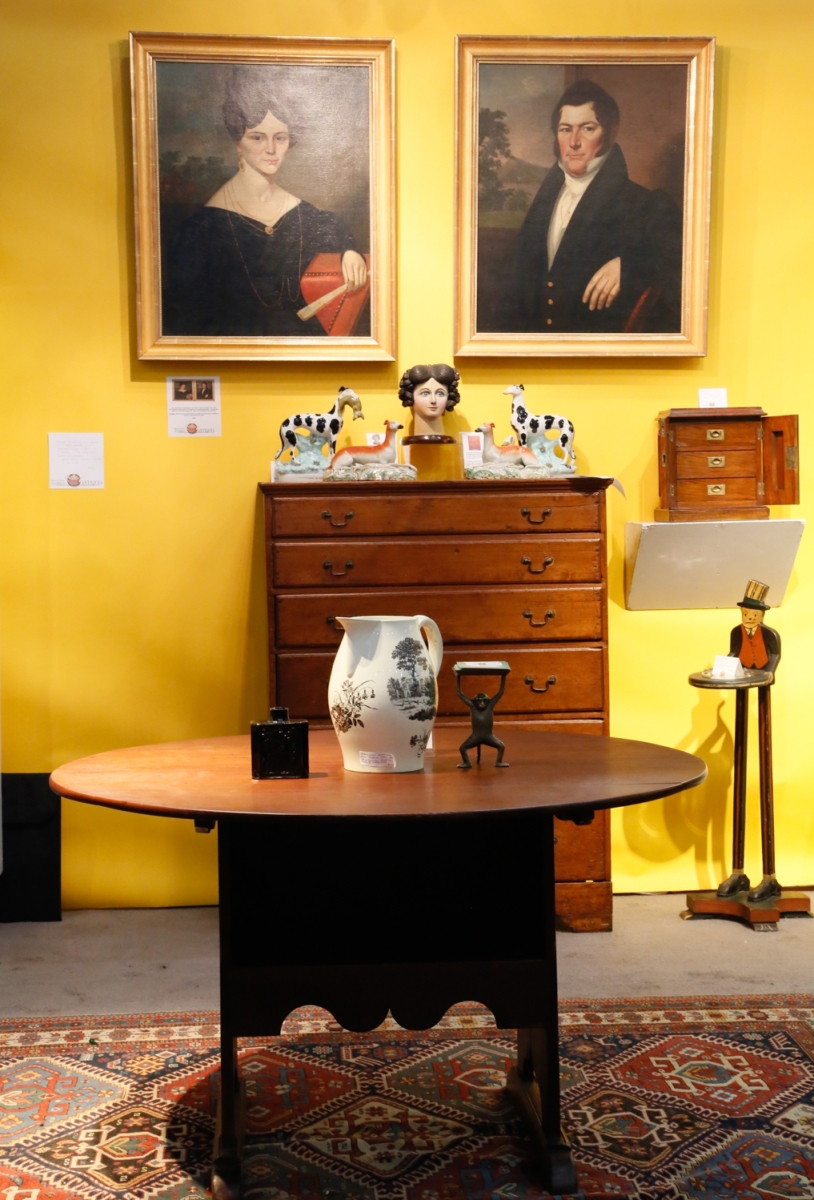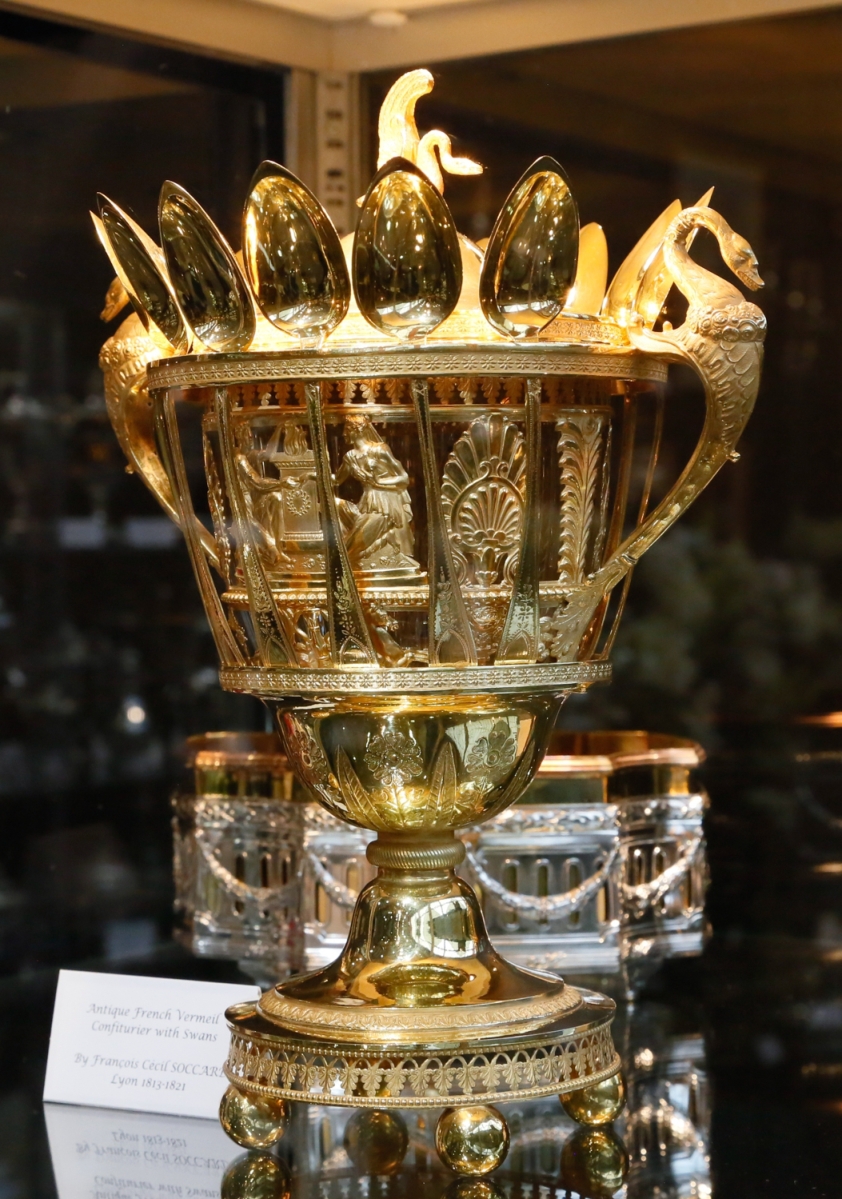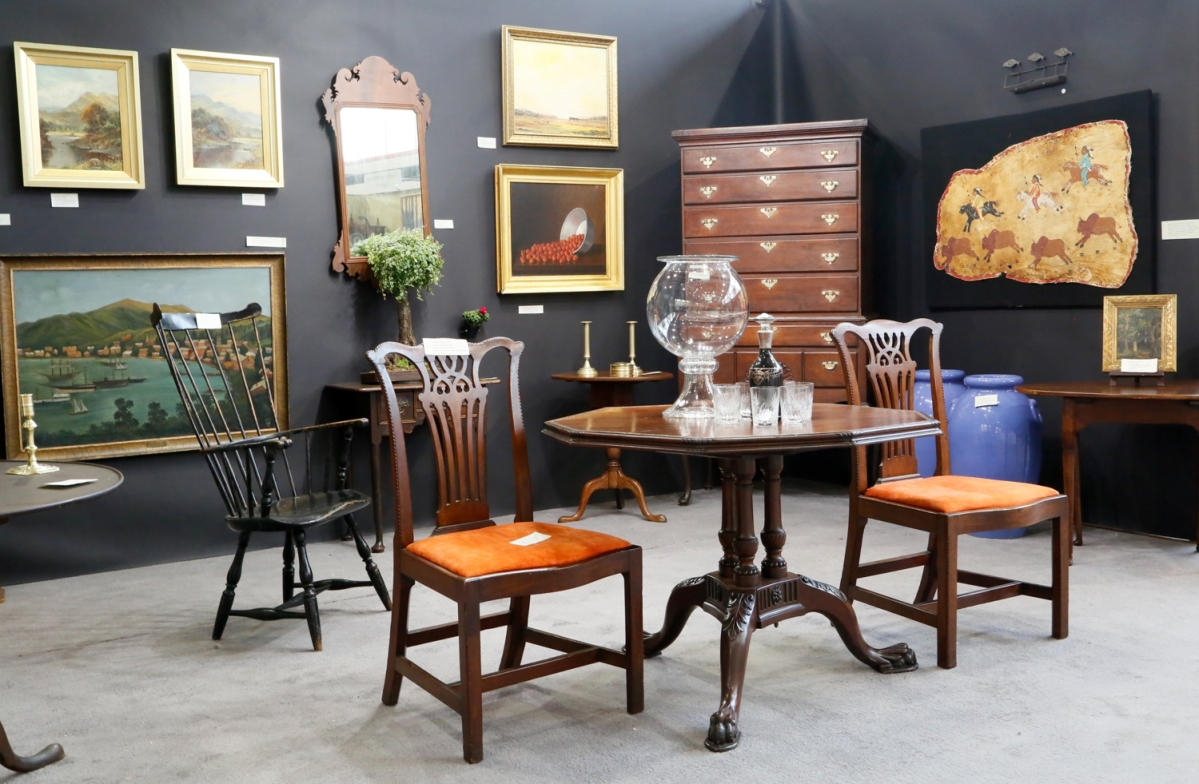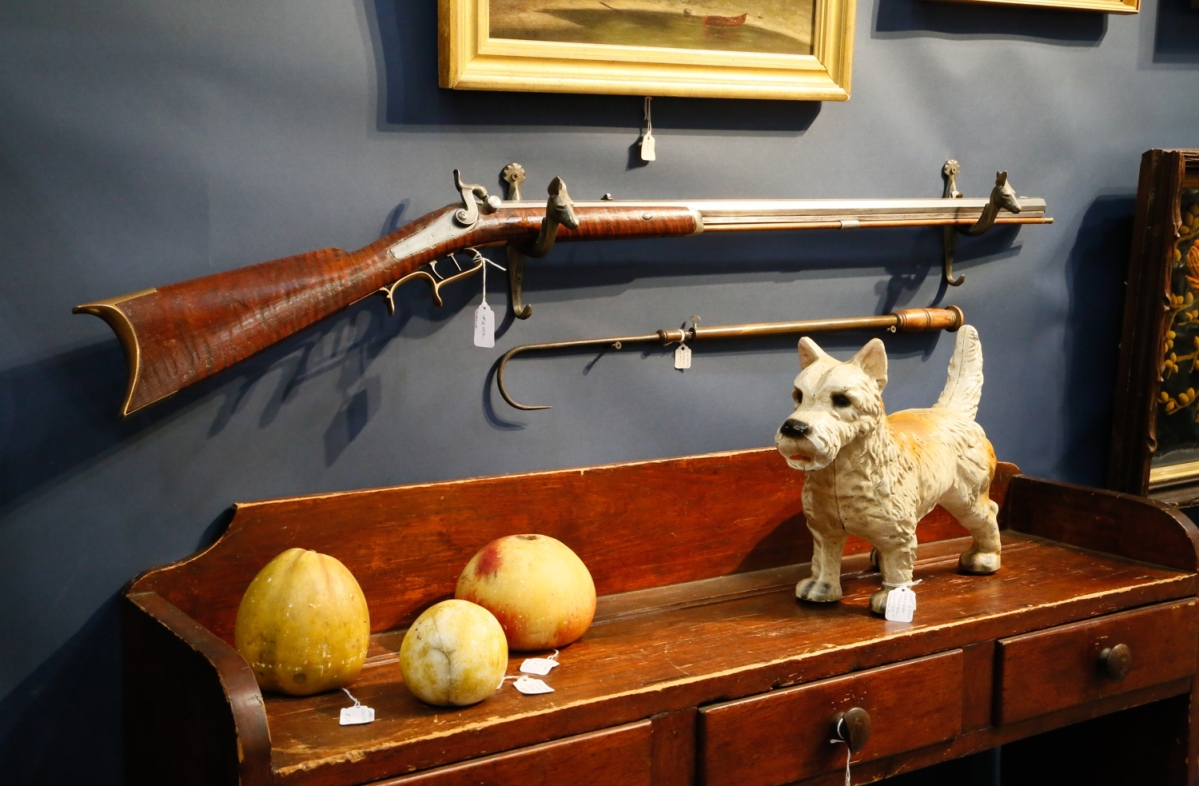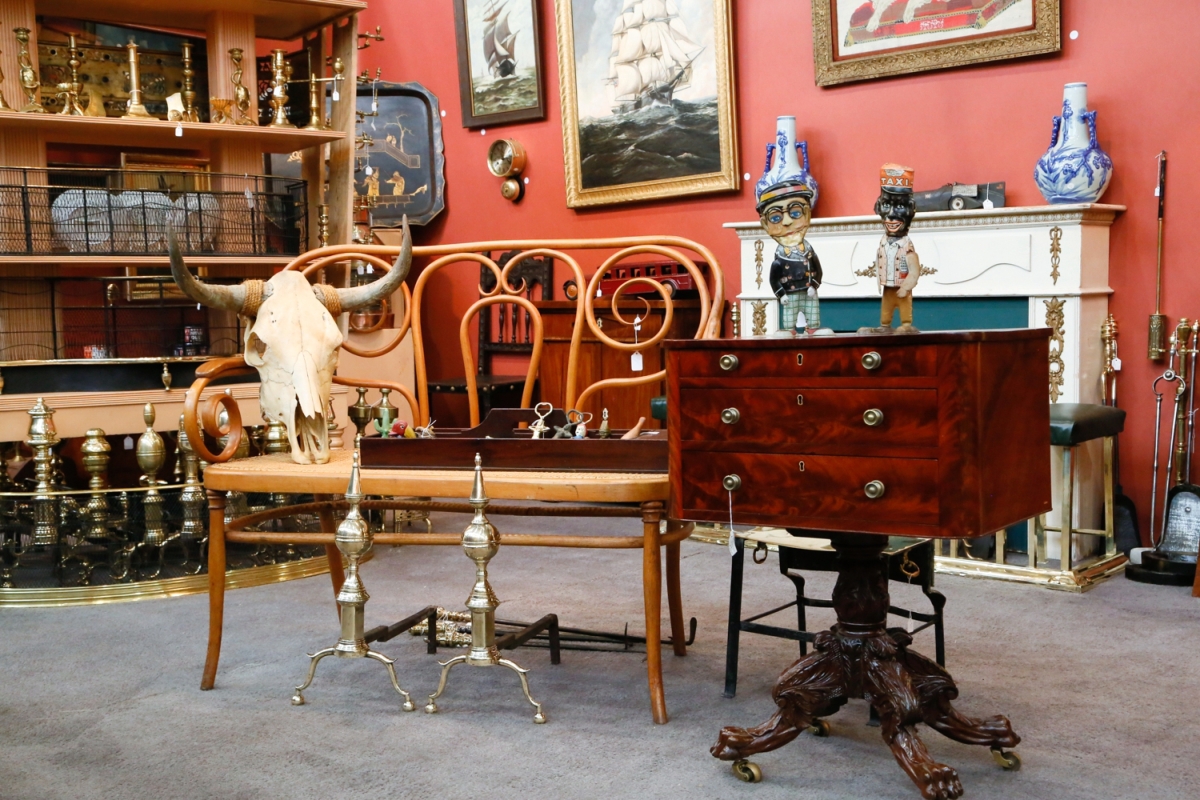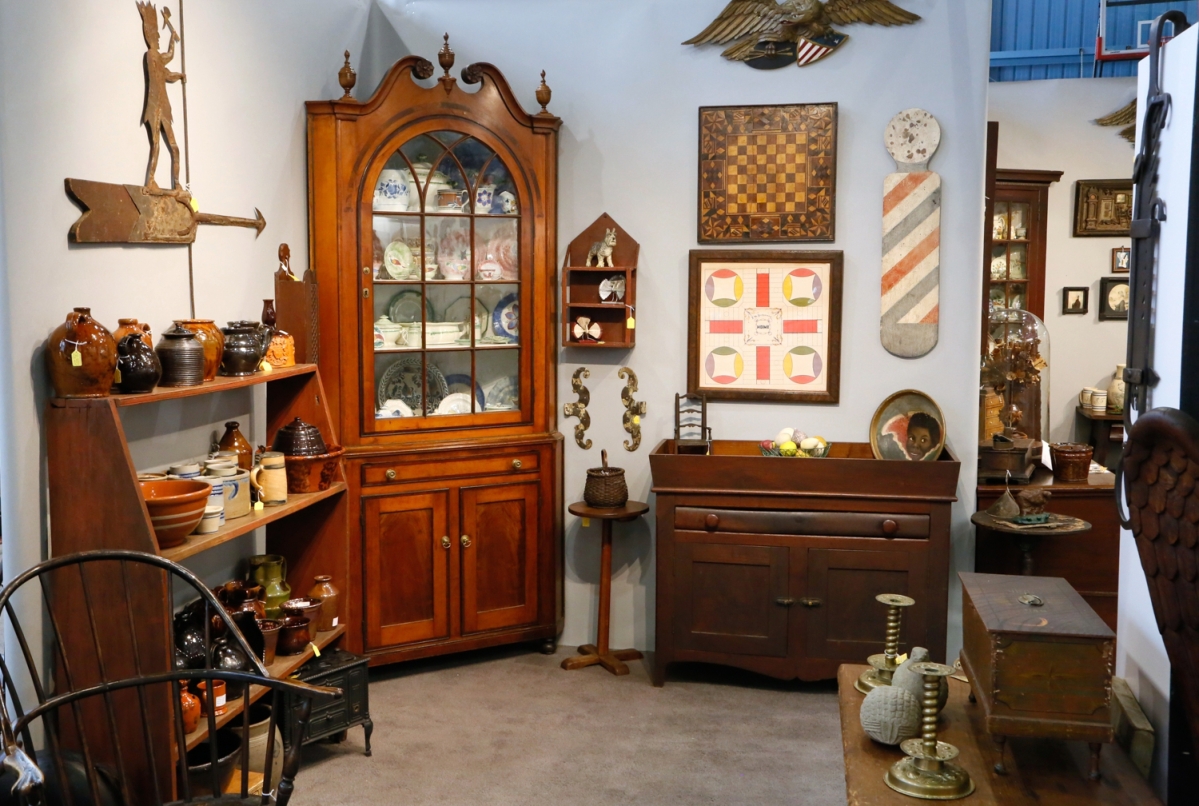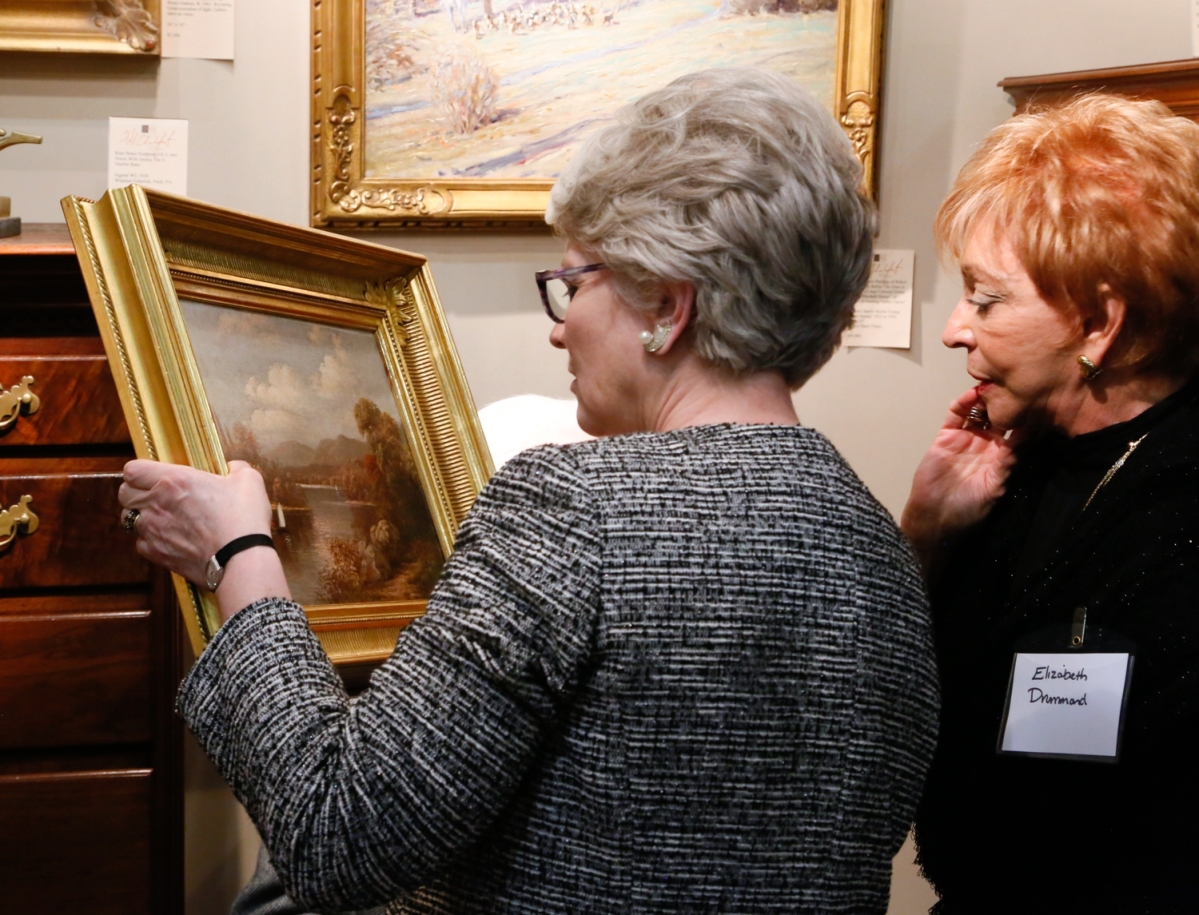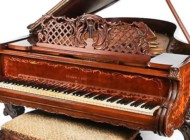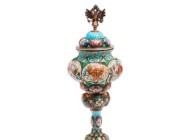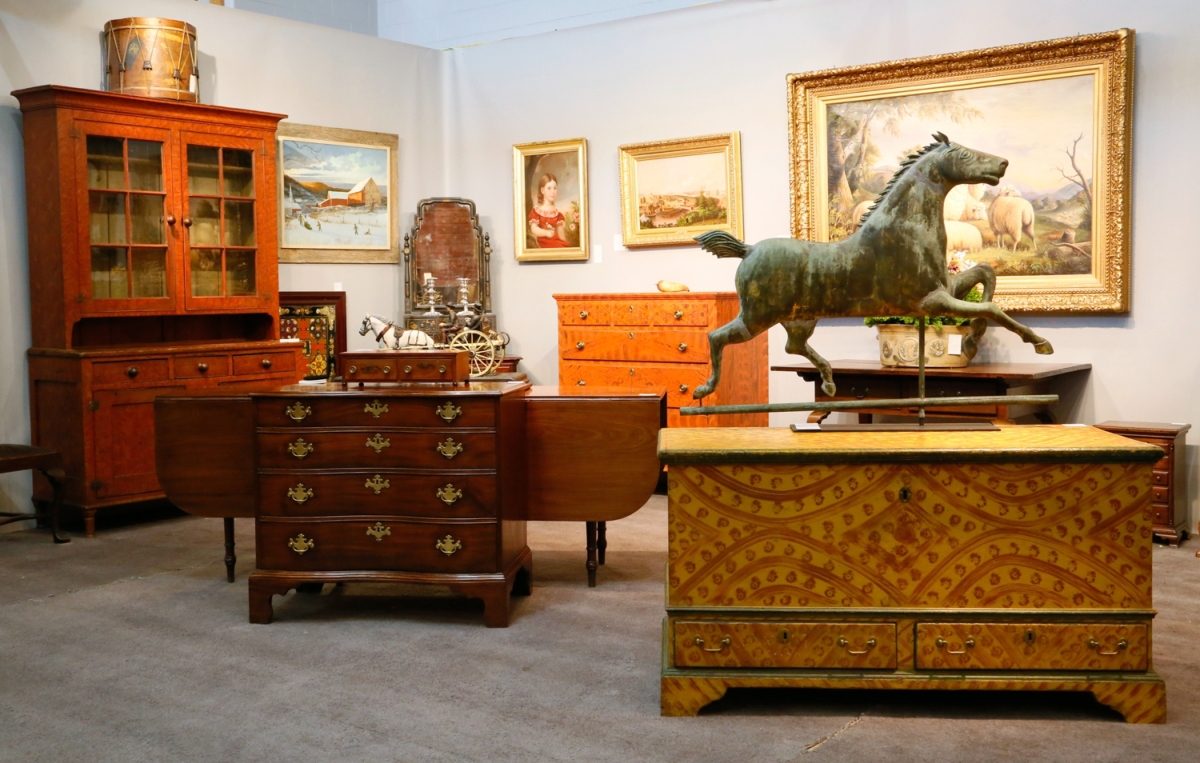
Front and center in New Oxford, Penn., dealer Kelly Kinzle’s booth was an L.W. Cushing & Co. horse weathervane. It was made circa 1870, when Cushing was still in their transitional phase, using the body molds they purchased when they bought out A.L. Jewell & Co. three years earlier, but replacing the head with their own design.
Review and Photos by Greg Smith
EXTON, PENN. – It took a good shake to get the cold off as visitors arrived at the March 9 preview party for the 36th Chester County Antiques Show, entering through the lobby into the plushly decorated and barely recognizable gymnasium of the Church Farm School. The show, which continued through March 11, was transformed into a scene brimming with color and regional pride, filled with patrons who matched together, through an appreciation of history and historical objects, with the humble, rural landscape of Chester County from whence came many of the antiques that were exhibited before them.
The 42-dealer show is the sparkling attraction, and the objects and their stories are the vehicle that drives the success of this event, which has grown to be one of the largest fundraisers of the year for the Chester County Historical Society. Pennsylvania paint was around near every corner, complemented by the formal traditions of antiques shows: a mix of antique ceramics from the East and West, fine art, American and Continental furniture, country primitives, formal and informal decorative accessories, folk art, early prints, brassware, antique toys and so much more.
Chester County Historical Society president, Elizabeth Laurent, was on hand for the opening preview and could be seen in many of the booths with her glasses on, peering into the details of paintings and furniture pieces. A graduate of the Winterthur Program in American Material Culture, Laurent’s curatorial background affords her a deep familiarity with the objects in the society’s collection and provides her with an innate sense of their importance.
“We are, of course, an educational institution,” Laurent said. “We have this magnificent collection, and we preserve that, but we preserve it so people can learn from what we have.”
The historical society offers programs for children and adults, and is excited to be moving forward with new programming that will introduce a major new exhibit focusing on the thematic storytelling of Chester County from the 1860s to the present.
“It will tell the great stories of Chester County,” Laurent said. “With objects, stories and technology coming together in a Twenty-First Century exhibit. “
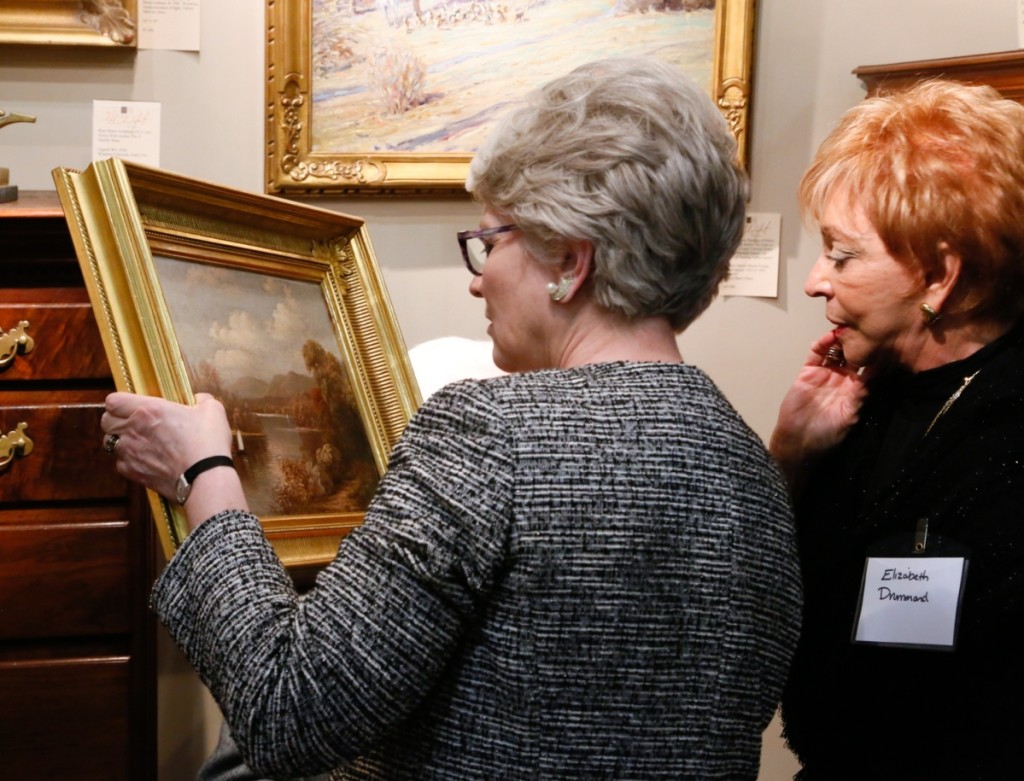
Chester County Historical Society president Elizabeth Laurent takes a closer look at a West Chester river landscape painting signed Geo. Cope, 1884.
It was another successful year for show manager Wesley Sessa, who reveled in the magnetism that this event displays in attracting objects that were made in the same area centuries earlier. “When you walk into the room, you see your local furniture, and you see the best of your local furniture,” he said. “And all around, you see the accessories that might have been found in these homes in earlier times. We’re a regional show, and our strengths lie in the high presence and depth of objects that can be found here.”
And the new dates didn’t seem to slow down the attendance much, either. In years prior, the show ran in early April, but the move offered to decongest the schedule for buyers and dealers as many of them participate in the Connecticut Spring Antiques Show and the Philadelphia Antiques and Art Show, both of which take place towards the end of the month in March and April.
While new dates and a new venue can lay a rocky road for some shows, Sessa was happy with how it turned out and is confident in the show’s longevity going forward.
“This was a transitional year to continue the legacy of a 36-year-old show, to keep it current and to keep it vital, and we’re looking forward to 2019,” Sessa said. “Looking at the show, walking out, I felt we made it. We found our home in the center of our county in an accessible and recognizable place, especially one that is a 100-year-old local landmark.”
Kelly Kinzle, New Oxford, Penn., brought a colorful mix of Pennsylvania painted furniture, adding a jovial flair to the show floor. Along his back wall was an Oley Valley, Penn., orange and red paint-decorated chest of drawers, circa 1810. To the front of the booth was a 1790 Berks County, Penn., pine and poplar paint-decorated blanket chest with a yellow background, red painted decoration and a green trim. It stood in front of a large oil on canvas painting attributed to Susan Waters (1823-1900), which featured the artist’s signature academic style and favorite subject: sheep grazing in a grassy landscape. Seven of the eight sheep are brought to pointed attention by an unknown off-canvas actor, while one lamb sleeps on the ground in the middle of the group, peacefully unaware. This 1889 painting was inscribed to Eleanor H. Kinch, who was a resident of Bordentown, N.J., where Waters and her husband settled in 1866.
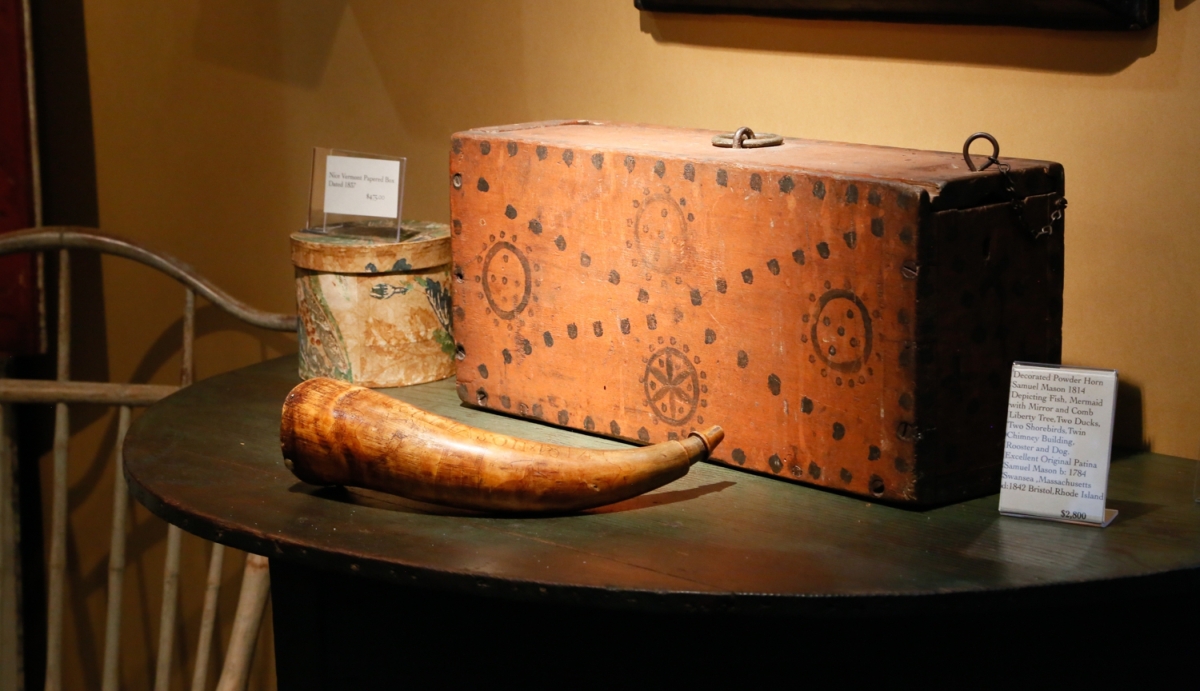
An assortment of smalls at Hilary & Paulette Nolan, Falmouth, Mass. The horn in front bore the name Samuel Mason, who was born in 1784 in Swansea, Mass. It featured a number of images, including fish, a mermaid with mirror and comb, a liberty tree, ducks, shorebirds and others.
A formal variety of Pennsylvania furniture pieces were on show in the booth of Downingtown, Penn., dealer Philip Bradley. One of the only paint-decorated pieces in his exhibition was a Northhampton County, Penn., blanket chest, which was attributed to the workshop of Peter Rohn, who worked in the Easton area in the late Eighteenth Century. Behind it was a circa 1800 Philadelphia inlaid mahogany gaming table with its original baize fabric. Bradley featured two tall case clocks from the Chandlee family of clockmakers. One of them, pictured in 6 Quaker Clock Makers by Edward C. Chandlee, was a walnut tall case clock by Benjamin Chandlee Sr, circa 1735-50. The other, at the booth’s center, was a circa 1795 eight-day walnut case clock from Isaac and Ellis Chandlee, who represented the third generation of Chandlee clockmakers. Isaac and Ellis worked together for only 12 years, from 1792 to 1804.
Skip Chalfant of H.L. Chalfant, West Chester, Penn., was excited to be back at the show and displaying a mix of furniture and art that had its roots in the area. “Sulfur was a poor man’s inlay,” Chalfant said, as he explained the walnut sulfur inlaid blanket chest, which bore the name of its recipient, Cadarina Moser, in large writing on its front side, above the 1801 year it was made and a central motif of large sprawling tulips. The Lancaster, Penn., chest was featured in Chipstone’s 2015 American Furniture book. Above it on the wall was a large portrait of a boy with his pets, a Charles II spaniel and a small song bird. The boy wore a long flowing blue jacket and stood in front of a drawn red curtain, which revealed a long reflecting pool and building in the background. Chalfant listed it as English, circa 1750.
A pair of copper wheel engraved hurricane shades were on exhibit by James M. Kilvington, Dover, Del. The pair were English, circa 1830-40, and featured a matching ivy pattern along the top and bottom with a repeating tropical bird in a tree around the middle. The dealer also featured a “Tri-corn” shaped sconce that Kilvington originally thought was English, but after consulting with another dealer, was led to believe the wood was walnut and the piece was likely American. It had scalloped edges and its original carved pineapple finial to the top. Along his far wall was a bright floral decorated tole lunch box, circa 1840, along with three American copper weathervanes: two running horses and a rooster, all from the second half of the Nineteenth Century.
Baltimore fine arts dealer Robert M. Quilter shared a booth with Alexandria, Va., dealer Taylor Thistlethwaite. The duo split the booth at the seams, with Thistlethwaite bringing a fine selection of American period furniture and Quilter providing a checkerboard display of fine art along the walls. Among his favorite works in the booth, Quilter pointed to an 1840 Chester County oil on paper landscape by Adam May Stevenson, a Philadelphia gentleman and artist. The artist was a member of the same family that amassed the Stevenson collection of Chippendale furniture. On the floor, Thistlethwaite was exhibiting a Boston block-front desk from the 1770s. The chest turned up in Washington DC the month prior and Thistlethwaite was unable to resist. With expressive brass hardware and thick ball and claw feet, the dealer said, “I just love the boldness of it.”
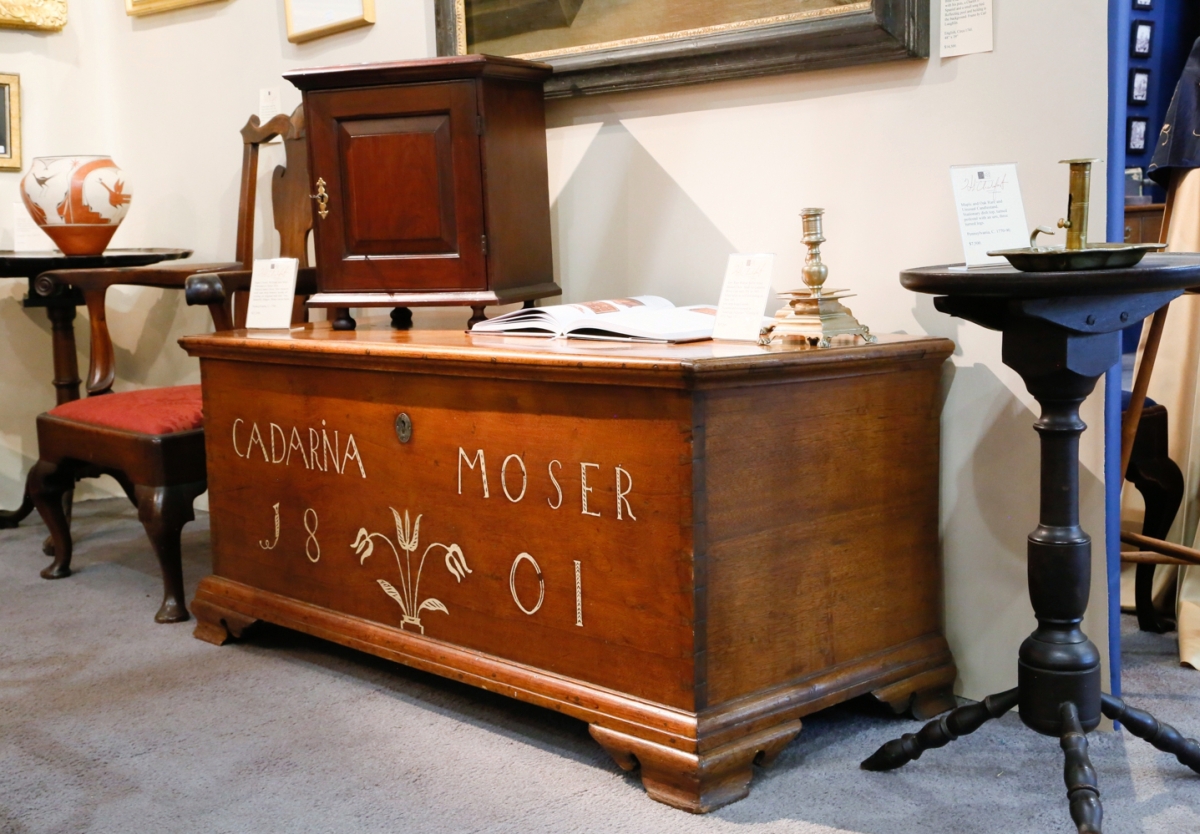
A Lancaster, Penn., sulfur inlaid blanket chest was on show in the booth of H.L. Chalfant, West Chester, Penn. The walnut chest featured the name of its recipient, Cadarina Moser, above the 1801 year it was made and a central motif of large sprawling tulips. It was featured in Chipstone’s 2015 American Furniture book.
Michael Weinberg from West Pelham Antiques, Pelham, Mass., brought in tow a fine selection of Americana, including shaker boxes, painted furniture, folk art, needlework and ceramics. Among the lot, the dealer found intrigue in an English pottery plate that was made for one of the great Washington DC lodges of the early Nineteenth Century. Owned by proprietor Jesse Brown, The Indian Queen Tavern, located near Capitol Hill, was a popular boarding house for congressmen during the 1830s-40s. During this time, elected officials would only spend part of their year in Washington, making it more economic to take up boarding at a lodge instead of owning property. The house was well-known, notably playing host to a handful of other popular characters from American history, including Sam Houston, Davy Crockett, Daniel Webster and Samuel Colt. John Tyler, the tenth President of the United States, was sworn in there. “Perhaps they ate off this plate,” said Weinberg.
If buyers were looking for carved detail, they would have felt at home in the booth of John H. Rogers, Elkins, N.H. Aside from offering his large selection of butter molds and furniture, Rogers hung a pair of carved Chinese window frames on the wall. “Everything on them is symbolic,” Rogers said. “Each image represents blessings or knowledge. I just think it’s incredible.” The dealer believed the pair to be at least 100 years old and probably older, made of mixed woods, primarily pine and camphor. Lotus flowers were carved throughout, along with central elements, including birds and dragons. “Symbolism used to be referred to as China’s third language. Even to the illiterate, meaning could be conveyed instantly,” he said.
Millwood, Va., dealer Malcolm Magruder stood behind his waist-high showcase, delicately maneuvering a sailor-made whale bone balance toy into position. “I’ve been dealing in balance toys for 40 years,” he said. The toy took the form of a male figure, dressed in a hat and jacket, with one leg pointed down and the other lifted at the knee, with a long, flexible lead balancing beam extending on both sides, terminating on each end with a ball the size of a marble. Magruder stood there for a moment, delicately moving it this way and that, before saying, “While this one is the most difficult toy I’ve ever had to balance, it’s also the earliest American example I’ve ever had.” The dealer also had two others, which were Anglo-American.
The elegant preview party hosted 450 people for a soiree of history, which continued through the weekend and saw buyers like Jamie Wyeth and William DuPont perusing the booths and adding to their collections.
The show plans to be back at the same time and place next year. For additional information, www.chestercohistorical.com or 610-692-4800.

